- Skip to Content
- Skip to Main Navigation
- Skip to Search

Indiana University Bloomington Indiana University Bloomington IU Bloomington

- “Ad”mission of guilt
- “Do I stop him?”
- Newspaper joins war against drugs
- Have I got a deal for you!
- Identifying what’s right
- Is “Enough!” too much?
- Issues of bench and bar
- Knowing when to say “when!”
- Stop! This is a warning…
- Strange bedfellows
- Gambling with being first
- Making the right ethical choice can mean winning by losing
- Playing into a hoaxster’s hands
- “They said it first”
- Is it news, ad or informercial?
- Letter to the editor
- Games publishers play
- An offer you can refuse
- An oily gift horse
- Public service . . . or “news-mercials”
- As life passes by
- Bringing death close
- A careless step, a rash of calls
- Distortion of reality?
- Of life and death
- Naked came the rider
- “A photo that had to be used”
- A picture of controversy
- Freedom of political expression
- Brother, can you spare some time?
- Columnist’s crusade OK with Seattle
- Kiss and tell
- The making of a govenor
- Past but not over
- Of publishers and politics
- To tell the truth
- Truth & Consequences
- “Truth boxes”
- When journalists become flacks
- A book for all journalists who believe
- The Billboard Bandit

Food for thought
- Grand jury probe
- Judgement on journalists
- Lessons from an ancient spirit
- Lying for the story . . .
- Newspaper nabs Atlanta’s Dahmer
- One way to a good end
- Over the fence
- “Psst! Pass it on!”
- Rules aren’t neat on Crack Street
- “Someone had to be her advocate”
- Trial by Fire
- Trial by proximity
- Using deceit to get the truth
- When advocacy is okay
- Witness to an execution
- Are we our brother’s keeper? . . . You bet we are!
- Betraying a trust
- Broken promise
- “But I thought you were . . . ”
- “Can I take it back?”
- Competitive disadvantage
- Getting it on tape
- The great quote question
- How to handle suicide threats
- Let’s make a deal!
- A phone-y issue?
- The source wanted out
- The story that died in a lie
- Thou shalt not break thy promise
- Thou shalt not concoct thy quote
- Thou shalt not trick thy source
- Too good to be true
- Vulnerable sources and journalistic responsibility
- The way things used to be . . .
- When a story just isn’t worth it
- When a story source threatens suicide
- When public should remain private
- The ethics of “outing”
- “For personal reasons”
- Intruding on grief
- Intruding on private pain
- Privacy case settled against TV station
- Seeing both sides
- Two views on “outing”
- Unwanted spotlight
- Whose right is it anyway?
- Other views on the Christine Busalacchi case
- The death of a soldier
- Firing at Round Rock
- A kinder, gentler news media
- Operation: Buy yourself a parade
- Rallying ’round the flag
- “Salute to military” ads canceled
- Tell the truth, stay alive
- The windbags of war
- Absent with no malice
- Anonymity for rape victims . . .
- An exception to the rule
- The boy with a broken heart
- Civilly suitable
- Creating a victim
- “Everyone already knew”
- An exceptional case
- Innocent victims
- Minor infraction
- Names make news
- Naming a victim
- Naming “johns”
- Profile of controversy
- What the media all missed
- Punishing plagiarizers
- Sounding an alarm on AIDS
- Suffer the children
- Anchor’s away
- The day the earth stood still
- Doing your own ethics audit
- Good guys, bad guys and TV news
- Is it just me, or . . . ?
- The Post’s exam answer story
- TV station “teases” suicide
- Yanking Doonesbury
- The year in review
- Colorado media’s option play
- Deadly lesson
- Deciding which critically ill person gets coverage
- When journalists play God . . .
- A delicate balance
- The Fallen Servant
- Handle with care
- It’s the principle, really
- Killing news
- Maybe what seems so right is wrong
- On the line
- Protest and apology after Daily Beacon story
- Red flag for badgering
- Sharing the community’s grief
- The “super-crip” stereotype
- “And then he said *&%*!!!”
- When big is not better
- When the KKK comes calling
- Not the straight story
- Agreeing to disagree
- All in the family
- Family feud
- Author! Author!
- The Bee that roared
- Brewing controversy
- Building barriers
- Other views from librarians
- The ethics of information selling
- Close to home
- Family ties
- How now, sacred cow?
- The ties that bind
- “Like any other story”
- When your newspaper is the news
- Not friendly fire
- Overdraft on credibility?
- The problem is the writing
- Written rules can be hazardous
- Project censored, sins of omission and the hardest “W” of all – “why”
- Risking the newsroom’s image
- The Media School
Ethics Case Studies
- Browse Ethics Case Studies
- Getting the story
You are what you eat . . . and do
Food news is serious business. It is time more food editors and writers — and their supervisors — treat it with the respect it deserves.
By Joe Crea
Joe Crea is food editor for The Orange County (CA) Register and his weekly column is carried by Knight-Ridder News Service. He is chairman of the professional development and ethics committee of the Newspaper Food Editors and Writers Association.
Author bio information is from the time of article submission and may not be current.
FineLine: The Newsletter On Journalism Ethics, vol. 2, no. 3 (June 1990), p. 5.
This case was produced for FineLine, a publication of Billy Goat Strut Publishing, 600 East Main Street, Louisville, Kentucky 40202. Reprinted with the permission of Billy Goat Strut Publishing. This case may be reproduced for classroom and research purposes. Publication of this case in electronic or printed form requires written permission from the publisher and Indiana University. An exception is granted for use in readers designed for specific academic courses.
Should food writers be treated differently than other journalists?
“Oh, please!” some colleagues will say with disgust. “Don’t even call them ‘journalists.’ They’re industry flacks and home hacks hired to justify food store ads and restaurant revenues.”
Unfortunately, there are some in my profession who deserve that reputation. For them, life is a banquet sans cover charge.
Not that every feature reporter must pursue his or her topic with the blazing social conscience of Charles Dickens. But it would be nice if more food reporters would cover a story where no snack is involved. Plenty of us do. But at times, some of us seem less reporters than beat cops at the grand opening of a donut shop.
Heaven knows, the temptations are many and delectable. If every freebie offered me were laid end-to-end, I’d be endlessly traveling to exotic ports, own a wine cellar to rival a Rothchild’s, possess every culinary gadget that hits the market and dine well (if not fabulously) virtually seven nights a week.
Anyone who knows how to play the angles can get in on one car or another of the gravy train open to those who carry a culinary byline. And believe me, there’s a boxcar of “opportunities.”
Among the recent pickings: An all-expenses-paid trip to Antigua courtesy of a New York-based PR firm where the chosen food writers would “judge” the area’s cuisine. Or the International Food Media conference where, for a token fee, the media could dine for 3 days in Alexandria, Virginia, one of the nation’s priciest metropolitan areas, while corporate spokespersons fed them the party line. Or the American Lamb Council’s “editors only” recipe contest where the winner in a very narrow field is awarded a full-ride prize to a grand luxe destination.
If we want other journalists to take us seriously, we have to earn respect. A good place to begin is realizing the high cost of the free lunch. As the ethics code of the Newspaper Food Editors and Writers Association says :”Gifts, favors, free travel or lodging, special treatment or privileges can compromise the integrity and diminish the credibility of food editors and writers, as well as their employers.”
To me, deserving to be treated with respect also means:
- Either returning gifts sent me by industry reps or giving samples to a charity, then following up with a form letter stating that while we appreciate notification of a new gizmo, we prefer an offer to order and pay for advance product releases.
- Cover issues and topics with social relevance. Sorry if that sounds lofty. I don’t do it every week. But I do strive to be mindful of such issues no matter how soft the topic by including nutritional, environmental, ethical and/or consumer considerations.
Readers are no longer exclusively interested in rhapsodic reporting about the cut of a doily or ingenuous use of an herb. Today’s consumer is concerned about ecology, animal rights and just how the body will metabolize fake fat. They want to know how to eat more intelligently. For me, ethics means responsibility. That begins with the subjects I tackle.
- Attending only those conferences and events for which my newspaper will pay.
- When such a conference is industry subsidized, before registering I first consider the program: Do I really need this experience? Will I seek out and report opposing perspectives? Is the fee a fair representation of the cost of amenities, meals, etc.? Is it implicit in the invitation that I will provide favorable coverage?
- When considering a feature on a restaurant or type of cuisine, I never accept a free invitation to sample their best. I visit as anonymously as possible, unannounced and on my newspaper’s dollar.
Food news is not all cupcakes and confectioners’ sugar. But for food editors and writers to treat it as the serious business it is, news management must do the same.
Many of us are expected to follow The Smart Set, report on trends au courant, have more than fleeting acquaintance with the cutting edge. Just how do you do that on a beer budget? Do you buy wines and spirits on your own? Rent your own tuxedo each time an event demands?
Management revels in the prestige, or at least the reader/viewer draw (not to mention the advertising revenues) such coverage generates. Yet when it comes to budgeting for the next fiscal year, the sports reporters are off to cover the Super Bowl, but are the folks covering diet and cuisine chalked in for legitimate conferences, urged to tackle significant subjects, given an opportunity to see what’s happening in their field outside the immediate community or to take part in professional development programs?
If not, then should you be surprised if “Becky Home ‘Ecy” grabs a seat on the freebie train?
Ethics Case Studies resources and social media channels
Questioning Customs and Traditions in Culinary Ethics: the Case of Cruel and Environmentally Damaging Food Practices
- Research article
- Open access
- Published: 06 January 2023
- Volume 8 , article number 7 , ( 2023 )
Cite this article
You have full access to this open access article

- Lyne Letourneau ORCID: orcid.org/0000-0002-3235-6947 1 &
- Louis-Etienne Pigeon ORCID: orcid.org/0000-0002-3935-7483 2
3658 Accesses
Explore all metrics
Culinary traditions and food practices are at the center of our daily lives and therefore constitute an important part of culture. Whether they are part of significant rituals or simply routinely enacted, they tell us something about the way we relate to each other and to the non-human world. In other words, food practices have an ethical dimension. Our paper focuses on the possibility to make objective ethical assessments of problematic cultural practices rooted in culinary traditions as a reply to arguments associated with an ethical relativism according to which cultures produce ethical systems that are self-validating and therefore that cannot be criticized objectively. Drawing from examples involving animal cruelty and production methods harmful to the environment, we argue that it is possible to judge ethically questionable food practices from an objectivist standpoint inspired by moral progress, in contrario to a relativist point of view. Following a short discussion of ethical relativism, we present the outline of an acceptability test for questionable food practices and use it to analyse the case of the dog meat industry in South Korea.
Similar content being viewed by others

Eating Ethically: Towards a Communitarian Food Model
What shall we eat an ethical framework for well-grounded food choices, what’s love got to do with it an ecofeminist approach to inter-animal and intra-cultural conflicts of interest.
Avoid common mistakes on your manuscript.
Introduction
In one of our undergraduate courses in ethics, students watch a short video entitled La Table Suisse – A portrait of a very special restaurant ( https://www.youtube.com/watch?v=HuC0uZ28hTI ). Its style is elegantly composed of beautiful images of cooking, fresh local ingredients displayed in artful ways, autumn forests and mountain sceneries. It shares the passion of a young chef inspired by nature, who feels very strong ties with his home country and who wants to reinvent his grandmother’s recipes, a woman whom he watched cooking as a kid and who exerted a great influence on him.
At that point in the video, the narrator – who is the young chef himself – reveals his intention to revive in a modernized fashion his grandmother’s cooking of the most tender part of the cat. The neatly polished image of a skinned cat suspended on a butcher’s hook accompanies this revelation. Invariably, a horrified murmur then arises from the classroom. The narrator goes on explaining that, “in Switzerland, it is legal to eat dogs and cats as long as they are yours and [that], because of [their] adoption system, [they] are the first restaurant in Europe to be able to offer this traditional meat.” He concludes by saying that he respects vegetarians who do not eat any animals but holds the view that there are no reasons not to eat cats and dogs if we eat chickens and pigs. With the end of the video, silence falls into the classroom and mild discomfort is perceptible among the students.
The restaurant La Table Suisse does not actually exist, and students are relieved to learn this information. Nevertheless, the video is effective in prompting discussion. For it questions our assumptions about meat eating, without stating a clear position in favour or against it. The video invites consideration of the issue by offering two arguments.
First, through the concluding remarks of the young chef, the video makes a claim familiar in animal ethics, the notion of treating similar cases similarly. In his seminal work Animal Liberation ( 1990 , 81ff), Peter Singer insists on logical coherence as a key criterion in rethinking our treatment of animals. Echoing this argument, the young chef finds no relevant differences between cats, dogs, chickens, and pigs that would justify their distinct treatment at an ethical level. Although he misappropriates Singer’s criterion by limiting its application to an anthropocentric outlook, the young chef raises an important point.
Settling the issue would lead to a lengthy discussion that we will not undertake here since our purpose is not to question meat eating per se , or the eating of any kinds of meat. Our interest lies more closely with the second argument presented in the video, which transpires from the young chef’s reference to his national roots and grandmother’s recipes.
In the video, the young chef describes cat meat as traditional meat, justifying his choice of menu by a strongly felt commitment to respect tradition in his unique art of cooking. The young chef thus offers the argument of respect for tradition as a legitimate and compelling reason for eating cat meat.
What should one make of such an argument? Do cultural considerations have the normative significance implied by the young chef? Would it be appropriate to claim that because a food practice forms part of a cultural tradition, it is consequently acceptable and immune to criticism and ethical accountability?
In this article, starting from the premise that “appeals to culture are ubiquitous in our pluralistic world” (Wichert and Nussbaum 2017 , 109), we will explore the moral relevance of customs and traditions in the context of food ways using three ethically contentious cultural food practices as our backdrop: fish’n chips, shark fin soup and dog meat. These examples relate to the consumption of animal products which may be criticized for their detrimental ecological impact or their level of inherent cruelty while defended as emblematic cultural food practices Footnote 1 . We will focus our attention on one conceivable configuration of the argument of respect for tradition rooted in strict relativism.
After briefly setting the scene in the second section, we will argue that food customs and traditions are not ethical “trump cards” that supporters of problematic cultural food practices may pull out of their sleeves to end the debate, whether the latter occurs at a national or international level. The argument of respect for tradition is neither final nor decisive. For it confounds an important conceptual distinction between explanation and justification (third section). What is more, in the form we consider, it is associated with a relativist perspective that, although popular in some circles, convincing criticisms challenge (fourth section). Yet, food customs and traditions should not be pushed away from the back of the hand. Culture has value and creates value (Sandler 2015 , 169). Footnote 2 Therefore, whenever summoned, the relativist version of the argument of respect for tradition should be examined for admissibility. Criteria have been proposed to this effect, providing the outline of an acceptability test that we will present and apply to one of our examples, that is, the consumption of dog meat (fifth section). Such analytical tools are important because, if one is to assess cultural practices, then one requires a method that prevents rash ethnocentrism and promotes a form of intellectual integrity, if not humility, on behalf of scholars dealing with potentially sensitive ethical issues.
Setting the Scene: Three Examples of Ethically Contentious Cultural Food Practices
When thinking about ethically objectionable cultural food practices, many examples come easily to mind, such as the Asian practice of eating live seafood (e.g., fish, crab, shrimp, or octopus). Other examples include French foie gras, dolphin hunting in Japan, whale hunting in Norway, as well as the Asian gourmet tradition of eating edible bird’s nest (Hobbs 2004 ; Holtzman 2017 ; Thorburn 2014 , 2015 ). These cultural food practices are well known to the public and have triggered their share of sensationalistic attention from the media and public outcries. Many have also attracted the attention of grassroots organisations in North America, Europe, and Asia. Still, other ethically objectionable cultural food practices are less familiar, such as the consumption of small migratory birds in the Mediterranean geographic area, the overexploitation of “bush meat”, and the growing popularity of guinea pigs in Andean gastronomic cuisine (Dawson 2018 ; Garcia 2013 ; Lien 2004 ).
Based on a limited content analysis of grassroots organisations’ websites, we have selected three cultural food practices commonly labelled as unethical: the consumption of fish’n chips in Western societies, shark fin soup in Hong-Kong and mainland China and dog meat in South Korea. Whereas the latter is criticised for its cruelty to animals, the first two cultural food practices confront us with a different problem: they are both harmful to the environment because they are now part of an industrial culture of mass production and consumption.
Do You Fancy Fish’n Chips Mate?
Fish’n chips is a downright classic on the menu of pubs and eateries all around the world where British culture has spread. The meal does not stand as a tradition carrying spiritualistic or ritualistic overtones. Nevertheless, it is extremely popular and enjoyed among friends and family members when eating out casually. Eating fish’n chips is commonly accepted to the point where it is carried out without knowledge of its environmental implications. After all, why should we question ourselves about the morality of eating a plate of fried cod Footnote 3 and potatoes? The truth is that individuals and families eating fish’n chips as part of their usual diet might not feel like they are participating in the destruction of marine ecosystems, but they are, despite the benign appearance of the meal.
Fish’n chips is an important part of contemporary Western culture, which it has penetrated. However, its mass production implies actions within marine ecosystems that are harmful to nature regarding the scale of production necessary to satisfy the demands of craving Western pub customers. This simple cultural food practice, enlarged to industrial proportion and now part of a mainstream and dominant food culture, has become harmful to vast biotic communities, also known as ecosystems.
White fish commercial fisheries have had devastating effects on fish populations and marine ecosystems over the last century everywhere on the globe. Technological innovations in boats, sonars and catch preservation techniques have allowed the industry to collect fish well over the species’ reproduction rates. In Eastern Canada, for example, the cod population (which was historically known to be fabulously abundant) has been depleted on a large scale and its biomass is estimated to have been reduced to between 75% and 99% of its historical levels (Meyers, Hutchings, and Barrowman 1997 ). Cod fishing requires trawlers, boats that rake the bottom of the sea to catch vast amounts of fish. This technique is highly productive, but also affects all life forms living at the bottom, severely damaging the ecosystems (Hiddick et al. 2017 ). The Canadian government stopped the rapid fall of the cod population in 1992, but the ecological consequences are still present today.
Shark Fin Soup for Everyone!
Mass production and consumption is no longer the privilege of Western countries. Industrialization has spread all over the globe. The possibility to produce large amounts of material goods, including food, forms an integral part of this change. Coupled with the growth of market-driven economies, many societies now enjoy the advantages of mass production and consumption in terms of accessibility to food and other goods at relatively low prices. The phenomenon of increased consumption of shark fin soup in Hong Kong and mainland China shows similarities with the fish’n chips story. Technical innovations helped fisheries in providing the basic ingredient in greater amounts, ensuring the commercialization of shark fin soup (Calgano 2013 , 51). Between 2000 and 2011, the United Nations Food and Agriculture Organisation (FAO) estimates that the shark fin market generated revenues around 377.8 million US (Dent and Clarke 2015 , 1).
The problem with the increased consumption of shark fin soup in Hong Kong and mainland China is its ecological consequences. As with white fish fisheries, the scale of exploitation of the resource has had destructive effects on marine ecosystems. Footnote 4 This production now specifically targets many species of sharks (Gile et al. 2016 ), which is a new trend since sharks were traditionally caught as secondary catches. Both methods are still in use, but the ecological consequences are similar in all regions where the fisheries take place. Since sharks are predators, their disappearance, or a massive reduction in their population, creates a cascade effect on the food chain (Ferriti et al. 2010 ). Natural prey can proliferate and invade trophic niches, once freed from their predators. This phenomenon disrupts the fragile ecological balance of marine environments with consequences difficult to estimate on the long run. Moreover, shark finning, the practice of catching sharks solely to extract their fins, raises issues in terms of animal ethics. The sharks are brought on board, their fins are cut off, after which the animals are released, only to die from subsequent bleeding or suffocation (Fowler and Séret 2010 , 4).
It’s a Food Dog’s Life
Western cultures entertain a powerful taboo on the consumption of dog meat. However, despite being “man’s best friend,” dog flesh is consumed in many Asian countries and there are records of dog eating in many places (Simoons 1967 , 92ff). Although relatively marginal, dog meat eating sustains a market of nearly 30 million dogs slaughtered each year for their meat in Asia, with 10 to 20 million dogs in China alone, 2 million in South Korea and 5 million in Vietnam (Humane Society International 2016 ). Other estimates are more conservative and point towards 13 to 16 million dogs slaughtered annually for meat (Podberscek 2009 , 617).
In South Korea, the consumption of dog meat is a controversial topic. International campaigns to ban the consumption of dog meat have spurred considerable negative media attention over the last decades (Lien 2004 ; Oh and Jackson 2011 , 40ff) and local grassroots organisations have joined in the effort. For not only are the breeding conditions detrimental to animal health and welfare, leading to injury, physical disease, suffering and mental distress, but the methods of dog slaughter are violent (Czajkowski 2014 , 33–36).
As Dugnoille testifies in his ethnographic account of dog meat consumption based on fieldwork at Seoul’s largest meat market:
At the farm, to maximize profit, dogs are kept in horrendous conditions and feed on their own feces, rotten food with antibiotics, and each other’s remains. When taken to the market, only the healthiest looking individuals are held alive in cages, while the others are killed, kept refrigerated, and sold to customers for a lower price than live dogs ( 2018 , 223).
There is no surprise in learning, therefore, that the generic breed of dogs from which meat is (although not exclusively) obtained, that is the yellow dog, is called ttonggae, which means literally “shit dog” (Dugnoille 2014 , 3).
As for the way dogs are slaughtered, customary methods include beating the animal to death with metal pipes or hanging a live animal by the neck above a fire (Dugnoille 2017 , 15). Such violent killing practices are technically forbidden in South Korea (Kim 2008 , 208–209). However, as Dugnoille explains, “dog-meat consumers are pushy and wish to have their meat ‘properly’ prepared” ( 2018 , 218). Violence thus continues to be exercised against meat dogs because of customer demand (Dugnoille 2018 , 223). Footnote 5
Respect for tradition encapsulates one common defence of contentious cultural food practices Footnote 6 . The consumption of dog meat is defended as an important feature of Korean culture and identity (Walraven 2002 ). The circumstances supporting the development of such a discourse are complex, involving a mix of historical events with a discursive tradition emphasising anger and violence as typical traits of Korean temperament (Dugnoille 2018 , 223–224; Dugnoille 2014 , 4). The defence of dog meat in contemporary South Korea emphasises “the ‘cultural rights’ of South Koreans to practice their traditional food ways, even if other cultures [view] those practices as offensive” (Oh and Jackson 2011 , 33 and 43ff). Disapproval from Westerners is indeed unwelcomed and considered a manifestation of cultural imperialism (Kim 2008 , 232–233; Wu 2002 , 40). Shark fin soup remains a popular feature of gastronomic Chinese cuisine, although consumption has declined since 2006 following a series of interventions by public figures, the Wildaid organization and an important awareness campaign led by the mainland Chinese government aimed at public agencies and private corporations (Vallianos et al. 2018 , 7). Its popularity has nevertheless moved to other Asian countries such as Thailand. A desire to emulate a food practice associated with prestige is part of the sociological explanation of the appeal for shark fin soup which is therefore defended as a traditional gourmet dish for special occasions such as weddings and business meetings (Vannuccini 1999 , 6.2). Finally, the case of fish’n chips is different. It is so commonly accepted – or, in other words, imbedded in contemporary Western culture – that it does not trigger any form of serious ethical questioning. Issues of tradition, therefore, are latent, attesting to an ethical blind spot in the collective ethos. Were fish’n chips to gain explicit negative media attention, it is likely that respect for tradition would find its way into the debate – exactly as in the case against meat eating generally.
In the following sections, we will explore whether the argument of respect for tradition, or more precisely one version of the argument rooted in strict relativism, provides protection from ethical scrutiny, and can justify the continuance of cultural food practices criticized as being ethically objectionable.
The Explanatory Role of Customs and Traditions
Anthropologists have long observed the existence of great variability between what human groups consider as edible, or in other words between food inventories. Food sociologists attribute this diversity to culture (Harris 1998 , 13–14).
According to Fischler, not everything that is biologically eatable is necessarily culturally comestible ( 2001 , 25–32). Societies have different food cultures; they have evolved dietary patterns that include culinary classifications through which food preferences and avoidances are determined (32–37). Food ways, understood as the customs and traditions relating to food and its preparation, do play a role in determining what is good to eat. Calling attention to customs and traditions as underlying food habits and food tastes is therefore accurate as a descriptive statement of fact.
For instance, in North America and Europe, we do not eat dogs and cats as a matter of culture; but under different circumstances (e.g., geopolitical history, social environment), maybe we would, just as we commonly dine on chickens and pigs. Culture thus provides an overall explanation for why people eat—and continue to eat—certain foods (and reject other food items).
Many culturally popular food items, such as serving pumpkin pie on Thanksgiving or strawberry shortcakes, homemade lemonade, or iced tea during the summer, are not disputed. We might feel disgust at the idea of eating foods uncommon to our culture or society (e.g., insects, sea cucumbers, algae, durian), but we understand that others might enjoy them, owing to their different food culture. However, among the array of food practices, some attract disapproval and are strongly condemned. This is the case for the consumption of animal products perceived to involve damaging effects on the environment or a high level of cruelty, like the examples introduced above which draw condemnation in complete dissociation with any attack on meat eating per se .
Inasmuch as the latter are regarded as displays of cultural traditions, they are considered as woven into the fabric of collective and individual identity, that is, as having cultural value. For that reason, as the case of dog meat powerfully illustrates, supporters often claim that we should just accept these traditional or cultural practices, and that “outsiders” (particularly) have no business in condemning and challenging them on ethical grounds (Wichert and Nussbaum 2017 , 109). Under such a view, respect for tradition makes all cultural food practices immune to ethical scrutiny, no matter how cruel to animals or damaging for the environment.
But to hold such a view is to ignore the conceptual distinction between explanation and justification (Macklin 1999 , 39–40, 59; Massé 2008 , 110; Sandler 2015 , 175; Shafer-Landau 2004 , 120). As already mentioned, culture explains food ways. It provides reasons for their occurrence, as well as their persistence over time. Narratives are told about their origin, social representation, structural effect, symbolic dimensions, etc. that help us understand how these food practices came about and why they are still around.
For instance, in the case of fish’n chips, we know that it became popular during the 19th century in the British Isles. This cooking method, consisting of deep-frying pieces of white fish first dipped in batter, was apparently imported by Jewish immigrants, mostly coming from Spain (Panayi 2014 , 109). Soon enough, it became very popular within the working classes of England’s industrial neighbourhoods. It is cheap to make at home and can be sold right on the streets, not to mention its compatibility with British insular culture. Its popularity then spread all around the Western world and further. In some way, fish’n chips is the direct ancestor of fast food, reflecting the industrial culture of mass production and consumption (Walton 1992 , 101).
Shark fin soup consumption in China shows similarities with the fish’n chips story, although it does not proceed from working class cuisine, but from the popularization of an aristocratic dish. Indeed, shark fin soup entered the official menu of refined imperial Chinese cuisine during the Ming Dynasty (14th to 16th century). At that time, the meal was qualified as a “treasure of the sea” for symbolic reasons attributable to the shark’s status among sea creatures (Vannuccini 1999 , 6.2). Despite its high price and the intricacies associated with its preparation, Footnote 7 shark fin soup became popular outside aristocratic circles during the last decades of the 20th century, with the rise of a middle-class population in mainland China and Hong Kong (Vannuccini 1999 , 6.2.8). From a European point of view, serving shark fin soup as a starter is equivalent to serving caviar or foie gras: it says something about the host’s culinary refinement and… wallet. With this spread of the middle-class population and the new availability of shark fin soup, Chinese citizens participate in a class affirmation ritual that was exclusive to a group of privileged elites in times now revolute.
The eating of dog meat dates back in Korea from more than two thousand years. It is generally associated with Confucianism, more precisely with “hot” food in the classification of food. It therefore belongs to the Confucian category of yang related to male character. This symbolic association classifies the consumption of dog meat as both food and medicine without distinction (Podberscek 2009 , 619). In traditional Korean medicine, eating dog meat is depicted to counter the effects of heat during the summer, the idea being to “fight fire by fire” (622). However, dog meat is no longer a seasonal market product; it is consumed all year round (Dugnoille 2018 , 218–219). The reason relates to the belief that dog meat increases “the level of stamina of the consumer, thereby increasing his/her sexual capabilities but also his/her strength” (Dugnoille 2017 , 14). While dog meat is fed to children to fortify their health (14–15), it is predominantly “connected to virility and the idea of enhancing one’s sexual stamina, which explains why it is still mostly consumed by men during social group outings.” (16) The violent slaughter methods are meant to ensure the desired effect by “tenderizing” the meat “while the animal is still alive (…) so as to increase the level of adrenaline in the blood.” (15) Increasing meat dogs’ adrenaline level in this manner is trusted to “confer more powerful virtues to the meat and then in turn to the consumer” (Dugnoille 2018 , 222). Because dog meat is expensive, especially when the animal is bought alive and slaughtered at the market stall, and because it is associated with medicinal virtues, offering dog meat to family and guests has become a symbol of social status (227–229).
There is much more to say about the history of fish’n chips, shark fin soup and dog meat consumption, including the rationales underlying these cultural food practices. For their rich tales not only reach over multiple centuries, but also inform the social and political role of cultural food practices invested with symbolic meaning (Ariès 2016 ; Dugnoille 2018 ; Panayi 2014 ).
However, “[t]hat there is an explanation for how things came to be leaves open the question of whether things ought to be that way” (Sandler 2015 , 175). Customs and traditions explain ethically objectionable food practices. However, whether ethically objectionable food practices should be maintained in the future calls for something other by means of justification. As Wichert and Nussbaum argue:
[Appeals to culture] parade as if they [have] normative force, but they never tell us where that force is coming from. All sorts of bad practices are highly traditional: for example, domestic violence, child sexual abuse, and, of course, the torture of animals. The fact that these practices have been around for a long time is not a point in their favor. Many bad things are very old: for example, racism, patriarchy, and domestic violence. If tradition has a normative force, its defenders have to try harder to say what that force is ( 2017 , 111).
Eating fish n’ chips as a celebration of pub culture, shark fin soup as a social status affirmation ritual, or dog meat as a male bonding experience are all food practices rooted in tradition. Because of this, food enthusiasts sometimes find it difficult to imagine the ethical horizon upon which these food practices unfold, being oblivious to the issues raised. Others are aware of the issues but take refuge behind culture by presenting or directing to various narratives. Yet, when doing so, they are confusing the distinction between explanation and justification. Their argument, therefore, does not have the persuasive force intended.
The argument of respect for tradition also turns out to be unpersuasive when associated with cultural relativism, a theory according to which customs and traditions are normative in nature.
Cultural Relativism and the Argument of Respect for Tradition
The argument of respect for tradition unfolds on the backdrop of a longstanding and complex meta-ethical debate opposing ethical relativism and ethical objectivism (Shafer-Landau 2004 ). Not all appeals to food tradition are necessarily grounded in relativism. For instance, the argument of respect for tradition might take forms compatible with ethical objectivism but place overriding value on tradition or refuse that outsiders to a food culture have authority to critique a food practice because they cannot fully understand the ethical value that it has. Footnote 8 Although all appeals to food tradition should be critically discussed, we will focus on the relativist configuration of the argument as a plausible – and probably popular – version considering the appeal associated with its straightforwardness. In this section, we will argue in favour of an objective approach to food ethics in opposition to cultural relativism based on the possibility of moral progress. Our goal will not be to refute cultural relativism, nor prove ethical objectivism but to highlight logical weaknesses in the former that are better addressed in the latter.
As a form of ethical relativism, Footnote 9 cultural relativism is “[t]he view that an act is morally right just because it is allowed by the guiding ideals of the society in which it is performed, and immoral just because it is forbidden by those ideals” (Shafer-Landau 2018 . G-2). According to cultural relativism, “right and wrong, good and bad, and so on are determined by the standards of particular cultures or societies” (Horsthemke 2017 , 124). It follows that “[t]here is no morality that is universal and that exists as an abstract set of principles, guidelines or laws (i.e., non-empirically), outside of a particular historical and institutional context and outside or beyond social or cultural tradition” (125). In other words, according to cultural relativism, ethical norms, rules, and standards are purely cultural and, hence, it is impossible to establish objective universal ethical norms.
Although cultural relativism permeates the ambient discourse on several issues well summarized in the debate on multiculturalism in modern states (Kymlicka 1995 , 1–2), its implications are problematic and lay the groundwork for critique (Shafer-Landau 2018 , 296–300; Shafer-Landau 2004 , 15ff). A thorough exposition of all criticisms addressed to cultural relativism is impossible here, since it would take us beyond the goal of this article. Nevertheless, we will succinctly introduce three arguments that challenge the validity, or practical implications, of such a position.
First, from the simple point of view of logic, one implausible consequence of cultural relativism is that it makes societies morally infallible or incapable of error as far as core moral commitments are concerned. Shafer-Landau explains that the problem “is that the ultimate moral principles [fixed by each society] can be based on prejudice, ignorance, superficial thinking, or brainwashing, and still be correct” ( 2018 , 298). Under cultural relativism, ideals such as ethnic oppression, male domination or religious bigotry are as morally compelling as values like social cohesion, gender equality or fairness. What is more, they are equivalent with one another. It follows that “when it comes to evaluating the basic codes of each society, relativists must allow that every code is equally good.” (299) There is consequently no room for evaluating, praising, or disapproving from an outside perspective the guiding ideals, values or principles underlying the social or cultural tradition of a given society, for all social codes are of equal ethical merit. Cultural relativism imposes respect for other cultures, but at an important cost: it eliminates all possibilities of judging and appraising their components.
Secondly, the same logical consequence applies internally given that cultural relativism also leaves no space for questioning the moral standards of one’s own society, since the latter are correct, and thus undisputable. This is not to say that cultures never change; they do continually and in many ways (e.g., for institutional, geopolitical, economical, and environmental reasons). However, the notion of moral progress (or regression) does not apply to the relativist outlook. If a society’s core moral commitments are true by definition, “then they cannot change for the better. They can change, of course. But no such change would mark a moral improvement” (300). It follows from cultural relativism that any change witnessed within a society is always cultural at first, and that ethical principles are replaced or revised only because of a cultural change, the other way around being impossible.
Thirdly, as a result, cultural relativism introduces a strong bias in favour of status quo that tends to enclose societies into unalterable cultural identities. This status quo has important anthropological, if not political, consequences. Cultural relativism is indeed associated with an essentialist representation of cultures, seen as “stable, empirically observable and definable entities, available for consensual interpretations” (Massé 2008 , 105 our translation). Immobilised in space and time, the notion of culture so conceived is adept in sustaining crystallised views of others, portrayed in caricatured traits (105–106).
Thus, cultural relativism not only presents logical flaws, but it also relates to a vision of culture that may not be entirely true. With respect to food ways, cultural relativism offers no possibility of calling into question, from an ethical perspective, any cultural food practices considered questionable. As Sandler illustrates:
According to cultural relativism, whether it is ethically acceptable to eat foie gras depends upon whether eating foie gras is part of one’s cultural practices. If it is widely acceptable and historically done, then it is ethically acceptable to do it ( 2015 , 176).
Although the strong ties that exist between culture and ethical principles cannot be denied, another theoretical position admits the exercise of moral judgement when confronted with problematic cultural food practices. This is ethical objectivism.
Ethical objectivism is a theory “that claims that there are correct moral standards, and that these standards are true independently of what anyone, anywhere, thinks of them” (Shafer-Landau 2004 , 146). In other words, such a theory implies that a certain set of moral claims are always true and that these claims can be known, or maybe discovered, by rational beings such as humans. Furthermore, these true moral claims might not be compatible with certain cultural behaviours. In such circumstances, we should be willing to change our cultural behaviours to conform to the objective moral truth. Of course, being an ethical objectivist is incompatible with any type of extreme cultural relativism.
The most well-known theory of ethical objectivity is certainly Immanuel Kant’s theory of deontological ethics developed in his Groundwork for the Metaphysics of Morals ( 1964 ). Written at the height of the German enlightenment period, Kant’s moral system is based on the existence of obligations preceding all practical rules of human conduct, which he describes as a “moral law.” According to Kant, as rational beings, we can search and discover moral principles and laws that should determine our practical ethics. Moreover, these principles and laws, being a priori, are superior to our daily cultural practices and should be implemented even if they come in contradiction with them (Kant 1964 , 57).
The notion of “duty” is at the core of Kant’s objective moral system. In fact, Kant argues that a true moral action can only be performed “for the sake of duty” (Kant 1964 , 65). That being the case, although actions may accidentally conform to duty, they should not be considered true moral actions per se . For example, if I consider eating animals to be contrary to duty and consequently voluntarily evade such a practice, I am acting “for the sake of duty.” However, if I live in a society wherein custom tells me to eschew meat consumption because it is impractical for economic reasons and that I follow this rule, I am not acting morally in a Kantian perspective. The reason is that moral action must proceed from a “good will” (Kant 1964 , 64) that accepts duties and acts for the sake of them, independently of any personal interests or practical or even cultural determinations.
This theoretical perspective undermines the idea that culture cannot be judged objectively from an ethical standpoint. Under Kantianism, it is possible, as well as advisable, to evaluate customs and traditions to insure conformity to moral duties. For instance, if cruelty to animals is considered to be wrong, then it is logically obligatory to condemn cultural practices involving animal cruelty, even if this implies questioning minority rights granted by the state in keeping with religious traditions or local cultures (Casal 2003 , 2). Tolerance might be invoked in reply, but as well said by Massé: “Why should tolerance, the key-value of ethical relativism, become the absolute principle guiding our relations to others?” ( 2008 , 107 our translation).
The main advantage of ethical objectivism as Kant first theorized it is the possibility for moral progress. Indeed, since knowledge of the moral law proceeds from reason, there is nothing keeping our understanding of this law from evolving over time, in the same way as our knowledge of, say, physical laws has increased in the last century.
A good example may be found in the recent flourishing of ethical thinking concerning the treatment of animals and the environment. Whether theories of animal ethics are inspired by Kant or by other ethical traditions, they all rely on the assumption that our understanding of the ethical dimension of animal life has progressed and that we must adapt our ethical standards accordingly. Authors like Peter Singer ( 1990 c. pl;l'lll) and Tom Reagan ( 1983 ) have challenged our cultural practices on the ground of moral progress, arguing for a better treatment of animals as a matter of justice. Both authors would disapprove of the cruel practices associated with dog meat consumption in South Korea.
As far as the environment is concerned, the last fifty years have marked an equally important calling into question of our ethical relation to the natural world. Various theories have been proposed, ranging from ecocentrism (Callicott 1999 ) to biocentrism (Naess 1989 ; Rolston 1994 ). The idea of sustainable development also brings under scrutiny many culturally embedded ways of living. These perspectives all suggest a form of respect for the integrity or sustainability of the environment. The problematic aspect of the consumption of fish’n chips and shark fin soup from an ethical standpoint relates in both cases to the mass scale intervention in ecosystems that they necessitate. Woven into the daily life of mainstream culture, industrialization and mass production have brought in abundance the fruits of Taylorism Footnote 10 to our plates (Fumey 2007 , 73). They have also exported devastating capture practices all over the planet’s oceans as food production was transformed.
The cultural food practices described earlier (see second section) all make sense within the confines of deeply ingrained customary habits or longstanding traditions. Judging them from a cultural relativist point of view is theoretically impossible. However, from an ethical objectivist perspective, they may be challenged. For the time being, there is no perfectly universal ethical standard from which to look upon the examples presented. However, developments in ethical theory are to be hoped for progressing towards better rational ethical norms and standards (Shafer-Landau 2004 , 124).
Outline of an Acceptability Test
Whether they are consciously enacted or routinely performed, customs and traditions play an important part in our lives. For not only do they shape our social behaviours, but they also provide meaning to our actions. Offering presents on occasions such as birthdays, weddings or Christmas Day is a well-known example of a cultural ritual. Although the gifts are tendered out of praxis, they nevertheless express important forms of gratitude and respect for others, as they also strengthen the bounds between individuals.
The same logic applies to food customs and traditions. Eating certain foods on specific occasions, for instance, is a common feature among societies that carries significant ethical meaning connected with a sense of community belonging, solidarity with one’s heritage and loyalty to others, all-important dimensions in leading a worthwhile existence. Food is therefore a central vehicle of meaning (Telfer 1996 , 37ff). As Csergo argues, “food is a cultural domain through which we affirm our identities, distinguish one community from another, and affirm our allegiances” (Csergo 2018 , 453). According to this, cultural food practices are worth of respect and consideration. But nevertheless, from an ethical objectivist point of view, one is allowed to question the moral justifications of cultural practices, since they are only empirically justified.
Under the Convention for the Safeguarding of Intangible Cultural Heritage (UNESCO 2003 ), Csergo shows that food ways, ranging from obtaining raw materials to the act of consumption, are recognised as a form of intangible cultural heritage (ICH) and that “a careful examination of the [UNESCO’s ICH lists] reveals a panoply of references to food” ( 2018 , 451). What is at stake in each of these inscriptions is “ensuring the viability of a given cultural heritage – that is to say, its sustainability and its transmission to future generations” (457).
However, as Cergo also notes, food culture is increasingly subservient to a flourishing economy of cultural diversity aimed at promoting tourism and international trade ( 2018 , 460). For instance, dog meat consumption is promoted to international tourists as a “must” in experiencing the taste of Korean cuisine (Oh and Jackson 2011 , 32; Dugnoille 2018 , 230 note 2), and within the country it has acquired the status of gastronomic commodity independently of its perceived medicinal virtues (Dugnoille 2017 , 15). Food customs and traditions can thus fall prey to instrumentalization and become aggressively marketed as commercial goods to be purchased and consumed in the global marketplace. In such a context, cultural food practices run the risk of becoming icons of an artificial kitsch culture created for mass consumption in high-rise towers or by wise local businesspeople, blurring the lines between genuine and fake Footnote 11 . Such a muddying effect is not necessarily troublesome and reprehensible, but it does point in the direction of caution when it comes to the argument from tradition. Indeed, not all food practices are likely to stand equal on the scale of food culture. Some will be worth safeguarding and accordingly will have normative significance; others will be devoid of such value and, for that reason, will not fall under the scope of the argument. Demonstrating perspicacity and exercising judgement when confronted with claims regarding culturally embedded food practices is therefore important, especially when considering what may be ethically problematic cultural food practices.
Among the criteria to be contemplated when it comes to assessing the normative significance of customs or traditions, Macklin proposes that “one way of locating the importance of cultural traditions on the moral landscape is to subject particular traditions to the test of fundamental ethical principles” ( 1999 , 58). Is the tradition oppressive? Does it produce more harm than benefits? Does it involve coercion of individuals? These questions refer to values or principles (i.e., justice, utility, and respect for persons) that can and do serve as universal moral yardsticks (59). As Macklin acknowledges, “this still leaves open the possibility that ‘respect for tradition’ could be justified by an appeal to a fundamental ethical principle if one were found to be applicable” (59). However, this possibility coincides with the modified form of ethical relativism that she supports—namely, moderate in the prescriptive role customs and traditions can play.
Macklin’s discussion builds on a humanist, or anthropocentric, perspective centred on the promotion of human rights and dignity. However, the developments that occurred in animal and environmental ethics over the last 50 years suggest that fundamental ethical principles based on animal welfare or ecosystem sustainability are legitimate benchmarks against which customs and traditions may be assessed. For instance, the practical concerns about the environmental consequences of mass fisheries of white fish and sharks are not to be ignored (Ferreti et al. 2010 ; Frank et al. 2005 ). In fact, it is now common knowledge that we humans, as individuals or social groups, do depend on the quality and the sustainability of our surrounding ecosystems.
Eschewing direct arguments objectionable to cultural relativists, Sandler uses a criterion like Macklin’s—although not restricted to humanism. To decide whether a cultural food practice is ethically normative, he suggests considering the level of importance of the ethical considerations that are compromised by the tradition and the extent to which they are impaired (Sandler 2015 , 183).
Only a detailed and neutral examination of cultural food practices may enable one to determine whether they can be ethically justified by the factors sustaining them (Macklin 1999 , 59). A negative determination is easier to articulate whenever a society recognises the ethical perspective from which its food custom or tradition is reproved. Under such circumstances, one simply must draw attention to the blind spot represented by the food practice under scrutiny (20). A negative determination should also occur if there is a way of preserving the core of a cultural food practice, while losing its questionable features (Sandler 2015 , 183; Wichert and Nussbaum 2017 , 113).
Finally, contrary to the essentialist bias of ethical relativism, cultures are questioned and challenged from the inside; they evolve under social and political tensions (Massé 2008 , 105). The existence of regional grassroots organisations advocating for reform speaks to this point. Their activism reflects ongoing cultural change or is telling of a struggle to that effect (Macklin 1999 , 65). Therefore, apart from the special case of indigenous peoples whose culture is already under threat to the point of irreparable disruption or destruction, it is hard to see why any food practice should be envisaged as static to begin with (Wichert and Nussbaum 2017 , 112). The central aspect to consider is the importance of the food practice under scrutiny for cultural identity and cultural value (Sandler 2015 , 183).
Over the last twenty years or so, reactions to international protests to the consumption of dog meat in South Korea have combined into a discourse carrying strong nationalistic connotations aimed at protecting this food practice as a symbol of national pride. However, South Koreans harbour a growing anti-dog-meat sentiment and Korean grassroots organisations condemn dog meat practices (Oh and Jackson, 2011 ; Dugnoille, 2014 ). Within the country, dissonance thus exits on the issue. What is more, opposition to dog meat finds anchor within Confucian philosophy, a moral system able to justify concern over animal welfare (Dugnoille 2014 , 4; Dugnoille 2017 , 13–15). South Korea has also adopted legislation to prevent cruelty to animals (Global Animal Law 2017 ), therewith implicitly recognising animal welfare as a legitimate ethical principle. Under the Animal Protection Act , cruel methods of killing (e.g., hanging by the neck) are even prohibited (art. 8(1)1). Such a situation limits the normative or prescriptive weight of tradition in the context of dog meat eating.
This is especially the case considering the inhumane breeding conditions and violent slaughter practices under which the consumption of dog meat takes place in South Korea. Whereas the welfare of dogs is compromised to a considerable extent, no tangible benefits accrue from this food practice aside from gratifying specious beliefs and reinforcing the symbolic value of dog meat.
In reply, defenders of dog meat may well invoke their “cultural rights” as an acknowledged universal ethical principle justifying respect of their food practice. However, according to Kymlicka, such rights “are not understood in international law as exempting specific practices from moral accountability” ( 2017 , 296 note 1).
It seems, therefore, that cultural considerations do not immune the consumption of dog meat from ethical criticism. The fact that violent slaughter methods are believed to be required for the virtues associated with the consumption of dog meat to manifest themselves reinforces this conclusion. Even if breeding conditions were reformed with a view to protecting animal welfare fully, meat dogs would still need to be tormented. For violence is a marker of the “quality” of dog meat. This feature distinguishes dog meat eating from probably most other forms of meat consumption. The latter may involve their lot of injury, disease, physical and mental suffering ensuing from breeding, transport, or slaughter conditions, but the possibility to eliminate these detrimental effects always remains open. In consequence, Westerners who condemn the consumption of dog meat in South Korea are shielded from the charge of hypocrisy—unless they do not also call into question the conditions operating in livestock production systems in the occidental world.
In this article, we have argued that an appeal to tradition cannot justify all cultural food practices. The examples we have chosen were meant to exemplify the extent to which food customs and traditions can be defined as ethically problematic. Animal cruelty and environmentally damaging practices are highly different in nature, but they point towards the necessity to reflect on traditions. First, although traditions are constitutive of cultural identities and explain why we act, or eat, the way we do, they do not necessarily justify these practices. Secondly, we have identified cultural relativism as one possible theoretical standpoint from which traditions can be accepted as justifications for cruel or environmentally harmful practices. However, cultural relativism carries logical flaws and epistemological errors, making it an incomplete tool in terms of ethical assessment. Finally, we have presented an outline of what could be a valid evaluation method for ethically questionable food practices inspired by an open-minded ethical objectivism taking into account the possibility for moral progress.
The ethical evaluation of cultural practices will always trigger resistance from strict ethical relativists or strong critics of cultural imperialism, and we should remember that this resistance is not solely based on a simplistic idea of ethics. For ethical relativists, there is a real danger to shift from a reasonable, open-minded, and progressive questioning to a narrow-minded form of ethical ethnocentrism rooted in cultural imperialism (Massé 2008 , 104). Our argument is not addressed to those who would consider moral objectivity logically flawed in the first place or necessarily unjust in its epistemological perspective. We think it possible to make objective ethical assessments of other cultures—and therefore judge cultural food practices – with intellectual humility and a deep respect for difference and plurality. The line might be difficult to draw between these two outcomes and any good-faith researcher might one day feel to have fallen on the wrong side. Being objective and open to cultural difference is no easy task. It requires objectifying oneself as much as it demands judging others. However, doesn’t moral progress suggest that such an ethos can be defined and practiced? Questioning cultural food practices cannot be achieved without remembering this problem, which transcends all ethical observations and speculations. Furthermore, the complexity of cultural practices will always be an obstacle to whomever desires to achieve a perfect and clear judgement. To acknowledge this reality means to accept the multidisciplinary nature of ethical assessments and, as we understand it, can only be an opportunity to better understand the world.
As far as meat eating per se is also defended based on “tradition” against accusations of cruelty to animals or environmental disruption, it raises similar questions entailing an analogous inquiry.
On the cultural dimension of food, see Barilla Center for Food Nutrition ( 2009 ).
Cod is a popular fish used for cooking fish’n chips. 60% of fish’n chips are made with cod. Other white fish are also used, such as haddock, plaice and ray. See https://www.nfff.co.uk/ .
It is estimated that more than 100 million sharks are captured every year for their fins (Ferreti et al. 2010).
On the legal uncertainty over dog meat in South Korea, see Kim ( 2008 , 208–212).
In the case of whaling, see for example Holtzman 2017 ; and Wichert and Nussbaum 2017 .
Preparing shark fins for consumption is a long and delicate process. It must be dried and rehydrated several times before it acquires the correct texture and taste.
The authors wish to thank the anonymous reviewer who shared this comment with them.
Ethical relativism is “[t]he view that correct moral standards are relative to individual or cultural commitments” (Shafer-Landau 2018 . G-3).
The concept of Taylorism, from Frederick Winslow Taylor (1865–1915), refers to a highly productive management strategy based on the separation of conception and execution activities on production sites. One of its main strategies is the ‘detailed division of labor’ by which the workers’ tasks are broken down into routines actions following a detailed scientific analysis of the production process (Pruijt 1997 , 3).
All food practices defined as ‘traditional’ are not to be automatically accepted as such, for this qualification can sometimes be rightfully challenged on ethnological and sociological grounds. For further readings on this question, see Kemmerer ( 2014 ). See also Heldke ( 2003 ) for a thought-provoking reflection on cultural food colonialism.
Ariès, P. 2016. Une histoire politique de l’alimentation – Du paléolithique à nos jours . Chevilly Larue: Max Milo Éditions.
Google Scholar
Barilla Center for Food & Nutrition. 2009. The cultural dimension of food . Parma: Barilla Center for Food & Nutrition. https://www.barillacfn.com/m/publications/pp-cultural-dimension-of-food.pdf . Accessed 21 Mar 2022.
Calgano, R. 2013. Requins: au-delà du malentendu . Monaco: Éditions du Rocher.
Callicott, J.B. 1999. Beyond the land ethic: more essays in environmental philosophy . Albany: State University of New York Press.
Casal, P. 2003. Is multiculturalism bad for animals? Journal of Political Philosophy 11 (1): 1–22.
Article Google Scholar
Csergo, J. 2018. Food as a collective heritage brand in the era of globalization. International Journal of Cultural Property 25: 449–468.
Czajkowski, C. 2014. Dog meat trade in South Korea: a report on the current state of the trade and efforts to eliminate it. Animal Law 21 (1): 29–64.
Dawson, S. 2018. Bushmeat. In Food ethics education: integrating food science and engineering knowledge into the food chain , ed. R. Costa and P. Pittia, 209–220. Cham: Springer.
Chapter Google Scholar
Dent, F., and S. Clarke. 2015. State of the global market for shark product . Rome: FAO Fisheries Technical Paper 590.
Dugnoille, J. 2014. From plate to pet. Anthropology Today 30 (6): 3–7.
Dugnoille, J. 2017. ‘I heard a dog cry’: more-than-human interrelatedness, ethnicity and zootherapy in south korean civil society discourse about dog meat consumption . October 10. Ethnography. https://doi.org/10.1177/1466138117735540 .
Dugnoille, J. 2018. To eat or not to eat companion dogs: symbolic value of dog meat and human-dog companionship in contemporary South Korea. Food Culture & Society 21 (2): 214–232.
Ferriti, F., et al. 2010. Patterns and ecosystem consequences of shark declines in the ocean. Ecology Letters 13: 1055–1071.
Fischler, C. 2001. L’Homnivore – Le goût, la cuisine et le corps . Paris: Odile Jacob.
Frank, K.T., et al. 2005. Trophic cascades in a formerly cod-dominated ecosystem. Science 308 (5728): 1621–1623.
Fumey, G. 2007. La mondialisation de l’alimentation. L’Information Géographique 2 (71): 71–82.
Fowler, S., and B. Séret. 2010. Shark fins in Europe: implications for reforming the EU finning ban . European Elasmobranch Association and UICN Shark Specialist Group.
Garcia, M.H. 2013. The taste of conquest: colonialism, cosmopolitics, and the dark side of Peru’s gastronomic boom. Journal of Latin American and Caribbean Anthropology 18 (3): 305–324.
Gile, J.L., et al. 2016. Genetic and phenotypic diversity in the wedgefish Rhyncobatus autraliae, a threatened ray of high value in the shark fin trade. Marine Ecology Progress Series 548: 165–180.
Global Animal Law. 2017. Database Legislation/National/South Korea. https://www.globalanimallaw.org/database/national/south-korea/ . Accessed 21 Mar 2022.
Harris, M. 1998. Good to eat: riddles of food and culture . Prospect Heights: Waveland Press.
Heldke, L. 2003. Exotic appetites: ruminations of a food adventurer . New York: Routledge.
Hiddink, J. G., et al. 2017. Global analysis of depletion and recovery of seabed biota after bottom trawling disturbance. Proceedings of the National Academy of Sciences 114(31): 8301–8306.
Hobbs, J.J. 2004. Problems in the harvest of edible birds’ nests in Sarawak and Sabah, malaysian Borneo. Biodiversity and Conservation 13: 2209–2226.
Holtzman, J. 2017. On whale: conundrums of culture and cetaceans as local meat. Ethos 82 (2): 277–297.
Horsthemke, K. 2017. Animals and the challenge or ethnocentrism. In Animals, race and multiculturalism , ed. L. Cordeiro-Rodrigues and L. Mitchell, 121–146. Cham: Palgrave Macmillan Animal Ethics Series.
Humane Society International. 2016. Asia’s dog meat trade: FAQs. http://www.hsi.org/issues/dog_meat/facts/dog-meat-trade-faqs.html . Accessed 21 Mar 2022.
Kant, I. 1964 (c. 1785). Groundwork for the metaphysics of morals . New York: Harper and Row.
Kemmerer, L. 2014. Eating earth: environmental ethics and dietary choice . Oxford: Oxford University Press.
Book Google Scholar
Kim, R.E. 2008. Dog meat in Korea: a socio-legal challenge. Animal Law Journal 14: 201–236.
Kymlicka, W. 2017. Afterword: realigning multiculturalism with animal rights. In Animals, race and multiculturalism , ed. L. Cordeiro-Rodrigues and L. Mitchell, 295–304. Cham: Palgrave Macmillan Animal Ethics Series.
Kymlicka, W. 1995. Multicultural citizenship . Oxford: Clarendon Press.
Lien, M. E. 2004. Dogs, whales and kangaroos: transnational activism and food taboos. In The politics of food . Ed. M. E. Lien and B. Nerlich, Chap. 10. Berg Publishers. https://www.duo.uio.no/bitstream/handle/10852/16230/10-lien.pdf?sequence=2&isAllowed=y . Accessed 21 Mar 2022.
Massé, R. 2008. Relativisme culturel et relativisme éthique: pour une approche critique de l’engagement face aux populations locales. In Soins de santé et pratiques culturelles: à propos du sida et de quelques maladies infectieuses , 101–122. Paris: Ed. C. Bellas Cabane.
Meyers, R.A., J.A. Hutchings, and N.J. Barrowman. 1997. Why do fish stocks collapse? The example of cod in Atlantic Canada. Ecological Applications 7 (1): 91–106.
Macklin, R. 1999. Against relativism – cultural diversity and the search for ethical universals in medicine . New York: Oxford University Press.
Naess, A. 1989. Ecology, community and lifestyle . Cambridge: Cambridge University Press.
Oh, M., and J. Jackson. 2011. Animal rights vs. cultural rights: exploring the dog meat debate in South Korea from a world polity perspective. Journal of Intercultural Studies 32 (1): 31–56.
Panayi, P. 2014. Fish’n chips: a history . London: Reaktion Books.
Podberscek, A.L. 2009. Good to pet and eat: the keeping and consuming of dogs and cats in South Korea. Journal of Social Issues 65 (3): 615–632.
Pruijt, H.D. 1997. Job design and technology, taylorism vs anti-taylorism . New York: Routledge.
Reagan, T. 1983. The case for animal rights . Berkeley: University of California Press.
Rolston, I.I.I. 1994. Conserving natural values . New York: Columbia University Press.
Sandler, R.L. 2015. Food ethics – the basics . London: Routledge.
Shafer-Landau, R. 2018. The fundamentals of ethics , 4th ed. New York: Oxford University Press.
Shafer-Landau, R. 2004. Whatever happened to good and evil? New York: Oxford University Press.
Simoons, F.J. 1967. Eat not this flesh: food avoidance in the old world . Madison: University of Wisconsin Press.
Singer, P. 1990. (c. 1975). Animal liberation, revised ed . New York: Avon Books.
Telfer, E. 1996. Food for thought . London: Routledge.
Thorburn, C. 2014. The edible birds’ nest boom in Indonesia and South-est Asia. A nested political ideology. Food Culture & Society 17 (4): 535–553.
Thorburn, C. 2015. The edible nest swiftlet industry in Southeast Asia: capitalism meets commensalism. Human Ecology 43: 179–184.
United Nations Educational, Scientific and Cultural Organization (UNESCO). 2003. Convention for the safeguarding of intangible cultural heritage. 17 October. 2368 UNTS 1 (CSICH).
Vallianos, C., et al. 2018. Sharks in crisis: evidence of positive behavioral change in China as new threats emerge . San Francisco: Wildaid.
Vannuccini, S. 1999. Shark utilization, marketing and trade. Rome: FAO Fisheries Technical Paper 389.
Walton, J.K. 1992. Fish and chips and the British working class 1870–1940 . Leicester: Leicester University Press.
Walraven, B. 2002. Bardot soup and confucians’ meat—food and korean identity in global context. In Asian food - the global and the local , ed. K. Cwiertka and B. Walraven, 95–115. Richmond: Curzon Press.
Wichert, R.N., and M.C. Nussbaum. 2017. Legal protections for whales’ capabilities, entitlements, and culture. In Animals, race and multiculturalism , ed. L. Cordeiro-Rodrigues and L. Mitchell, 95–120. Cham: Palgrave Macmillan Animal Ethics Series.
Wu, Frank H. 2002. The best “Chink” food: dog eating and the dilemma of diversity. Gastronomica 2 (2): 38–45.
Download references
Acknowledgements
The authors acknowledge the contribution of Jimmy Voisine in gathering the background material relating to the food practices discussed in this paper. They sincerely thank him for his valuable collaboration and apologize in advance for any mistakes introduced by their own doing in connection with those food practices.
Author information
Authors and affiliations.
Département des Sciences Animales, Université Laval, Québec, Québec, Canada
Lyne Letourneau
Faculté de Philosophie, Université Laval, Québec, Québec, Canada
Louis-Etienne Pigeon
You can also search for this author in PubMed Google Scholar
Corresponding author
Correspondence to Lyne Letourneau .
Ethics declarations
Conflict of interest.
On behalf of all authors, the corresponding author states that there is no conflict of interest.
Additional information
Publisher’s note.
Springer Nature remains neutral with regard to jurisdictional claims in published maps and institutional affiliations.
Rights and permissions
Open Access This article is licensed under a Creative Commons Attribution 4.0 International License, which permits use, sharing, adaptation, distribution and reproduction in any medium or format, as long as you give appropriate credit to the original author(s) and the source, provide a link to the Creative Commons licence, and indicate if changes were made. The images or other third party material in this article are included in the article's Creative Commons licence, unless indicated otherwise in a credit line to the material. If material is not included in the article's Creative Commons licence and your intended use is not permitted by statutory regulation or exceeds the permitted use, you will need to obtain permission directly from the copyright holder. To view a copy of this licence, visit http://creativecommons.org/licenses/by/4.0/ .
Reprints and permissions
About this article
Letourneau, L., Pigeon, LE. Questioning Customs and Traditions in Culinary Ethics: the Case of Cruel and Environmentally Damaging Food Practices. Food ethics 8 , 7 (2023). https://doi.org/10.1007/s41055-022-00116-0
Download citation
Accepted : 13 December 2022
Published : 06 January 2023
DOI : https://doi.org/10.1007/s41055-022-00116-0
Share this article
Anyone you share the following link with will be able to read this content:
Sorry, a shareable link is not currently available for this article.
Provided by the Springer Nature SharedIt content-sharing initiative
- Non-human world
- Animal cruelty
- Food practices
- Find a journal
- Publish with us
- Track your research
Food Ethics Council
Understanding food ethics.
Our core belief is that any sustainable food system must have ethics at its heart .
Our approach to food ethics focuses on fairness and covers three dimensions – humans , animals and the planet . A good place to start with this is our 2010 report of the Food and Fairness Inquiry.
Food ethics allows us to judge what should happen in the food system. Whenever we make a decision, we take the opportunity to create positive change. With this comes power and responsibility.
As INDIVIDUALS , we make food decisions that have ethical implications every day, from groceries shopping to how we eat together and how we vote.
Within BUSINESSES , people face ethical choices whenever they decide what to do, how to source products, how they run businesses.
Within GOVERNMENTS , decision-makers deal with concerns about human health, animal welfare, environmental protection or trade justice.
Taking food ethics seriously, then, requires that we don’t simply take a stand on one ethical position – such as veganism, or plastics, or fair trade. It requires that we take the long-term view, consider the potential consequences of actions, look at issues ‘in the round’ and decide what is right, all things considered.
NOTIFICATIONS
Ethics and genetically modified foods – case study.
- + Create new collection
This class case study provides an example of introducing ethical thinking into the classroom to explore a controversial issue in science. It shows how the ethical frameworks in the Ethics thinking toolkit and a range of classroom activities can be integrated to scaffold ethical thinking.
This case study formed part of the research prior to developing the Ethics thinking toolkit and, as such, uses ideas that informed the development of the toolkit and not the toolkit itself. The Ethics thinking toolkit provides additional support to help structure students’ thinking and decision making using ethical frameworks.
Year 9 students used a range of ethical approaches to consider the acceptability of using modern genetic modification (GM) techniques to produce new or modified foods. The teaching sequence formed part of a larger unit of work on the genetic modification of foods.
Science focus
- Ecology (level 5): Investigate the interdependence of living things (including humans) in an ecosystem (and what changes could potentially arise when organisms are genetically modified using modern technologies).
- Evolution (level 5): Describe the basic processes by which genetic information is passed from one generation to the next (and that DNA modified in the germ line is also passed on).
- Participating and contributing (level 4): Use their growing science knowledge (of genetic modification) when considering issues of concern to them. Explore various aspects of an issue and make decisions about possible actions (whether to support the genetic modification of foods).
- Participating and contributing (level 5): Develop an understanding of socio-scientific issues (in this case, genetically modified foods) by gathering relevant scientific information in order to draw evidence-based conclusions and to take action where appropriate.
Learning objectives
- To understand that modern methods of genetic modification differ from traditional breeding methods.
- To identify some of the ethical issues associated with genetically modifying foods using modern technologies.
- To understand that different approaches can be used to make and explain (justify) ethical decisions.
- To use one ethical approach to argue for or against genetic modification using a specific example.
Using ethical approaches to guide decision making
Ethicists use a range of ethical approaches to make decisions about what is right or wrong. Students were introduced to five approaches that can be used to guide decision making: consequentialism (‘for the greater good’), rights and responsibilities, autonomy (making informed personal choices), virtue ethics and multiple perspectives.
See the article Frameworks for ethical analysis .
Of the 25 students in the class , 14 (56%) chose to use a consequentialist approach, 5 (20%) chose autonomy and 4 (16%) chose virtue ethics.
Teaching and learning activities
- Class identified differences between foods available in the past and those currently available.
- Ideas mapped onto a mind-map or fishbone diagram.
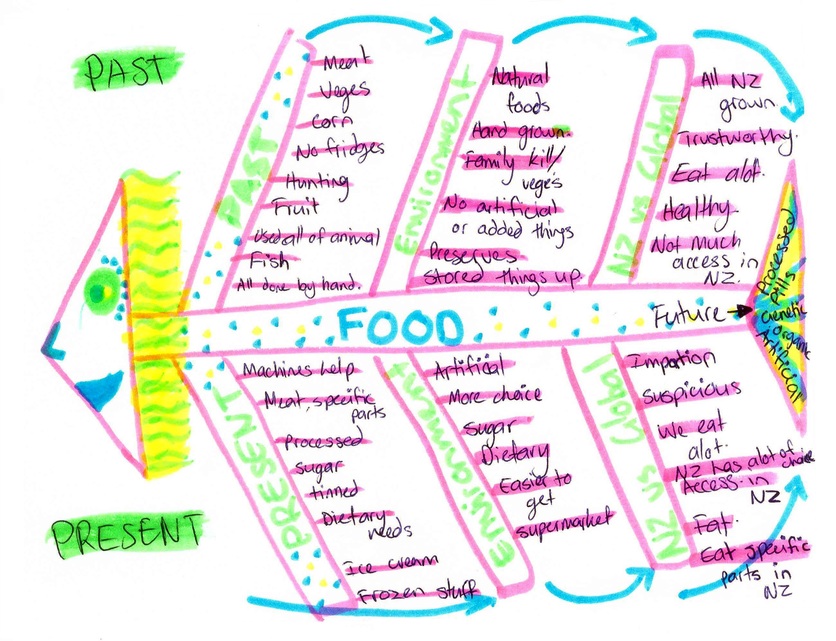
Future foods fishbone diagram
A fishbone diagram constructed by a Year 9 student to show differences between foods eaten in the past and those currently available.
Class discussions
- Whole- class discussion to explore possible future foods.
- Potatoes with a new gene that protects them from insect attack. Farmers don’t need to use chemical sprays (pesticides).
- Cows’ milk that has been genetically modified to produce a protein to treat cystic fibrosis. (People with cystic fibrosis have thick mucus that clogs their lungs and other organs. They rarely live beyond the age of 30.)
- Onions with a gene inserted that makes them milder and sweeter. They don’t make your eyes water when they’re peeled.
- Strawberries with a gene inserted that makes them resistant to weedkillers (herbicides). This means that farmers can spray for weeds but not kill the strawberries. Weed management is greatly simplified.
- ‘Golden rice’ with genes inserted so that it is enriched with vitamin A and iron for people in Third World countries. (Lack of vitamin A can cause blindness and anaemia, which can cause physical and mental retardation.)
- Bread with folic acid added to it to reduce the risk of spina bifida developing in babies during the pregnancy. (Spina bifida occurs when there is incomplete development of the brain and spinal cord and the baby has physical and often learning disabilities.)
- Goats’ milk that has been genetically modified to produce proteins that dissolve clots in arteries.
- ‘Super salmon’, raised in fish farms, that have been genetically modified for increased growth rate.
- Spreads such as margarine that have plant sterols added to reduce cholesterol levels in blood.
- Sheep’s milk that has been genetically modified to provide clotting proteins for haemophiliacs (bleeders).
- Eggs that have had omega 3 added, which can reduce the risk of heart disease and arthritis.
- Peanuts with genes deleted to reduce the risk of allergic reactions.
- Bananas that have been genetically modified to contain a vaccine that can block the transmission of the HIV virus that causes AIDS.
- Plants modified with a ‘terminator’ gene so that any seeds they produce are sterile. This reduces the risk of crops spreading to new areas, but also means that farmers can’t keep a portion of seeds to plant again the next year.
- New varieties of crops that contain a drought-resistant gene. This means that they may be able to grow in large areas of some countries where there is no irrigation.
- Create novel foods – like a carrot with purple and orange patterns – that might appeal to people who don't like to eat vegetables.
- Discussion and sequencing activity: How are the foods modified? What is genetic modification? How does it differ from conventional breeding?
Group presentation
Groups researched a chosen genetically modified food and prepared a PowerPoint presentation:
- How has the food been modified?
- Who would possibly use the food?
- Advantages and disadvantages of the new food.
- Arguments for and against the production of the food.
Class and group discussions
- What will shape the development of such foods in the future (for example, globalisation, population changes, environmental sustainability, public attitudes, scientific and technological advances, international and domestic law)?
- Is it right to genetically modify food? (For and against table.)
Teacher talk
- Introduced the five ethical approaches.
- Revisited the genetically modified foods values continuum and considered which ethical approach(es) influenced decision making.
Debate and further discussion
- Should foods be genetically modified? (One representative from each group.)
- Class discussion to identify the ethical approach(es) used in the debate.
- Individual position papers to argue for or against genetic modification using a specific example.
Key messages
- The teacher used a wider range of activities than normal.
- The modified foods values continuum worked well as an introductory activity because it helped students think about why they thought some issues were more important than others.
- Students reported that they felt more educated and informed about the pros and cons of genetic modification and that they had a better understanding of the different views people might have about the issue. The debate helped reinforce this.
- The students coped with the language and ideas of the ethical approaches.
- The students considered alternative views and the improvements in their justification skills.
- The students were engaged, motivated and enthusiastic.
- Writing frameworks helped the students to collate their research and present group and individual positions.
Acknowledgements
This classroom programme formed part of a project funded by Toi te Taiao : the Bioethics Council. We thank the teacher and students for participating in this programme.
Useful links
A Royal Commission on Genetic Modification was established by the Government on 8 May 2000 to look into and report on issues about genetic modification in New Zealand. Their report presented their findings in 2018 and you can download the full report here on the Ministry for the Environment website.
The Ministry for the Environment website explains genetic modification in New Zealand and the regulations surrounding it in New Zealand.
GM foods and how they are regulated is explained on the Food Standards Australia New Zealand website .
RNZ audio from Our Changing World looking at approval for field trials of genetically modified brassicas and issues raised in a two-part series – part 1 and part 2 .
See our newsletters here .
Would you like to take a short survey?
This survey will open in a new tab and you can fill it out after your visit to the site.

The Case of Nutritional Foods
- Markkula Center for Applied Ethics
- Focus Areas
- Business Ethics
- Business Ethics Resources
What are the ethical issues involved when company products go wrong?
What do we do when products go wrong? That question was explored by the Ethics Center's Ethics Roundtable for Executives at a September meeting featuring Greg Steltenpohl, chair of Odwalla Inc., and Kirk O. Hanson, director of Stanford University's Sloan Program at the Graduate School of Business. To facilitate discussion of the issue, Hanson created the following fictitious case. It does not represent a real event, but it does provide a framework for looking at questions of product responsibility. The case is presented in four parts to mimic how such a scenario might evolve in real time. At each break in the case, stop and ask yourself what you would do given the information you have.
First Warnings
Fred James, chief executive of Nutritional Foods Inc., a $50 million manufacturer of healthful foods, listened with concern as John Healy, his vice president for production, described reports that had come in during the past hour.
The reports came from two county health departments, one in Seattle and the other in Southern California. In each case, the health department official reported a possible link between acute food poisoning of a child and an unpasteurized apple product produced by Nutritional Foods and distributed throughout the Western United States. The health departments had not yet ruled out all other possible causes. Additional information was not yet available, and Healy did not have batch numbers for the products in question.
Nutritional Foods was rapidly becoming the best-known brand of natural or nonpasteurized foods in the Western United States. It made its products in two facilities, one in California's Central Valley and the other in a coastal city of Central California. Fresh fruit and vegetable products were shipped from growing regions throughout the West to these two facilities for processing and canning or bottling. The handling of nonpasteurized products was critical as contamination could occur in picking, transporting, or processing the fresh product.
Distribution was also critical to the freshness and safety of the company's products. Daily distribution from the company's processing facilities in company-owned refrigerated trucks ensured freshness.
Unpasteurized products had been popular in the health-food market for many years, but Nutritional Foods was the most successful of several companies seeking to appeal to the mainstream market as well as to the niche consumer. The company's success had led to its rapid growth and the construction of its new processing facility in the Central Valley.
"OK, John," said James, "what's our response? Do two 'maybes' mean we should do something immediately? We have had an occasional report, perhaps one every couple of months, during the past two years. None of those turned out to be traceable to our product. Do two reports represent anything other than a statistical quirk? Should we be doing anything but waiting for the final reports from the health departments in a couple of days?"
Concern Deepens
Healy dispatched company managers to the two counties where initial reports indicated there might be acute food poisonings related to one of the company's unpasteurized products. He was startled a short time later to receive a third and fourth report similar to the first two.
Although also not conclusive, the new reports made Healy wonder if something was terribly wrong. Healy immediately dispatched company managers to the two new counties, urging all four to get the batch numbers of the products in question. He also asked for an immediate meeting with James.
"Now what should we do?" asked Healy. "Should we warn the retailers, asking them to stop selling the product? Should we also warn the public? Such a move could devastate the company's reputation and its stock price at a critical moment. Don't we have an obligation to think long and hard before we take that step? How much certainty must we have and how serious does a problem have to be for us to proceed?"
Time to Act?
Healy was deeply troubled when he heard from his managers that health officials in the four counties they visited were virtually certain Nutritional Foods' product was indeed involved in the food poisonings. All the batch numbers, however, were not available. The two cases where company managers could get batch numbers were from a single day's production.
Healy was further troubled that three additional reports of possible food poisonings had come in by the end of the workday, though two were relayed by newspaper reporters. Each was checking claims by consumers that one of Nutritional Foods' products had made them sick. One of the reports involved a different company's products.
Healy also heard late in the afternoon from one of his children who had read in an Internet nutritional chat room that Nutritional Foods had a poisoning problem. Had the time come, Healy wondered, for more dramatic action? If so, what action should he take?
At 7 p.m., Nutritional Foods announced publicly and through its retail network that it was pulling all batches of the unpasteurized product associated with all but one of the alleged poisoning incidents. Once the news hit the wire services, 50 more calls cascaded into company headquarters late that night and early the next morning. Most were from consumers alleging they, too, had been poisoned by the company's products. Five more were reports from health professionals who stated they were treating possible poisonings.
At 9 a.m. the next morning, James convened a meeting of his Crisis Action Committee, an ad hoc group of managers that had been formed a few months earlier for just such a crisis. "Let me put several questions before the group," said James. "Are we doing enough by conducting a recall for the specific product in question, publicly asking consumers to return all unused products to their local retailer, and asking retailers to stop selling and return all of their supply to us? The press has done a pretty good job getting the word out. It's on the front page of perhaps 80 percent of the daily newspapers in our distribution area this morning.
"Should we do more to notify customers? Should we consider pulling all our products? The calls this morning allege adverse reactions from many different products.
"And what should be our strategy toward those who have been made sick by our product? If we show concern, isn't there a risk we will look like we are admitting liability? Finally, what should we do about the sickest of those affected? Two children are reported this morning to be in critical condition."
If you were Fred James, what action would you take?
Winter 1998
McCombs School of Business
- Español ( Spanish )
Videos Concepts Unwrapped View All 36 short illustrated videos explain behavioral ethics concepts and basic ethics principles. Concepts Unwrapped: Sports Edition View All 10 short videos introduce athletes to behavioral ethics concepts. Ethics Defined (Glossary) View All 58 animated videos - 1 to 2 minutes each - define key ethics terms and concepts. Ethics in Focus View All One-of-a-kind videos highlight the ethical aspects of current and historical subjects. Giving Voice To Values View All Eight short videos present the 7 principles of values-driven leadership from Gentile's Giving Voice to Values. In It To Win View All A documentary and six short videos reveal the behavioral ethics biases in super-lobbyist Jack Abramoff's story. Scandals Illustrated View All 30 videos - one minute each - introduce newsworthy scandals with ethical insights and case studies. Video Series
Case Studies UT Star Icon
Case Studies
More than 70 cases pair ethics concepts with real world situations. From journalism, performing arts, and scientific research to sports, law, and business, these case studies explore current and historic ethical dilemmas, their motivating biases, and their consequences. Each case includes discussion questions, related videos, and a bibliography.

A Million Little Pieces
James Frey’s popular memoir stirred controversy and media attention after it was revealed to contain numerous exaggerations and fabrications.

Abramoff: Lobbying Congress
Super-lobbyist Abramoff was caught in a scheme to lobby against his own clients. Was a corrupt individual or a corrupt system – or both – to blame?
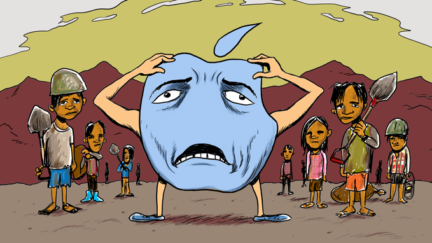
Apple Suppliers & Labor Practices
Is tech company Apple, Inc. ethically obligated to oversee the questionable working conditions of other companies further down their supply chain?
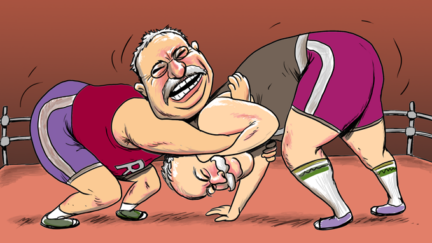
Approaching the Presidency: Roosevelt & Taft
Some presidents view their responsibilities in strictly legal terms, others according to duty. Roosevelt and Taft took two extreme approaches.

Appropriating “Hope”
Fairey’s portrait of Barack Obama raised debate over the extent to which an artist can use and modify another’s artistic work, yet still call it one’s own.

Arctic Offshore Drilling
Competing groups frame the debate over oil drilling off Alaska’s coast in varying ways depending on their environmental and economic interests.

Banning Burkas: Freedom or Discrimination?
The French law banning women from wearing burkas in public sparked debate about discrimination and freedom of religion.
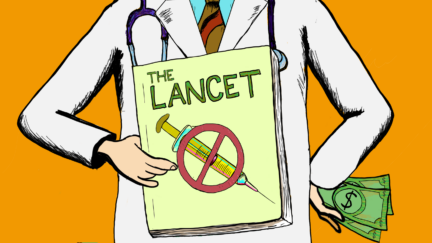
Birthing Vaccine Skepticism
Wakefield published an article riddled with inaccuracies and conflicts of interest that created significant vaccine hesitancy regarding the MMR vaccine.

Blurred Lines of Copyright
Marvin Gaye’s Estate won a lawsuit against Robin Thicke and Pharrell Williams for the hit song “Blurred Lines,” which had a similar feel to one of his songs.
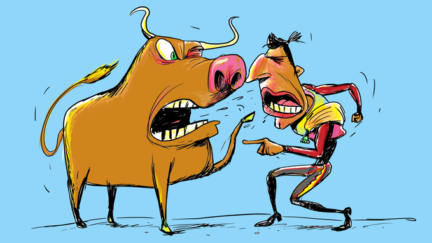
Bullfighting: Art or Not?
Bullfighting has been a prominent cultural and artistic event for centuries, but in recent decades it has faced increasing criticism for animal rights’ abuse.

Buying Green: Consumer Behavior
Do purchasing green products, such as organic foods and electric cars, give consumers the moral license to indulge in unethical behavior?

Cadavers in Car Safety Research
Engineers at Heidelberg University insist that the use of human cadavers in car safety research is ethical because their research can save lives.

Cardinals’ Computer Hacking
St. Louis Cardinals scouting director Chris Correa hacked into the Houston Astros’ webmail system, leading to legal repercussions and a lifetime ban from MLB.

Cheating: Atlanta’s School Scandal
Teachers and administrators at Parks Middle School adjust struggling students’ test scores in an effort to save their school from closure.
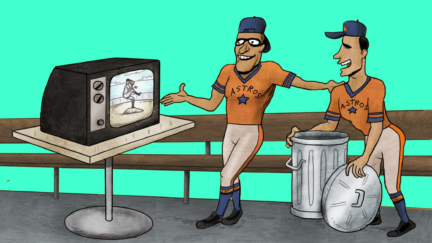
Cheating: Sign-Stealing in MLB
The Houston Astros’ sign-stealing scheme rocked the baseball world, leading to a game-changing MLB investigation and fallout.
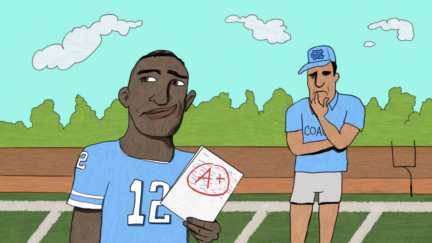
Cheating: UNC’s Academic Fraud
UNC’s academic fraud scandal uncovered an 18-year scheme of unchecked coursework and fraudulent classes that enabled student-athletes to play sports.
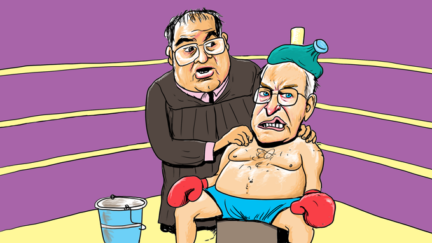
Cheney v. U.S. District Court
A controversial case focuses on Justice Scalia’s personal friendship with Vice President Cheney and the possible conflict of interest it poses to the case.

Christina Fallin: “Appropriate Culturation?”
After Fallin posted a picture of herself wearing a Plain’s headdress on social media, uproar emerged over cultural appropriation and Fallin’s intentions.

Climate Change & the Paris Deal
While climate change poses many abstract problems, the actions (or inactions) of today’s populations will have tangible effects on future generations.
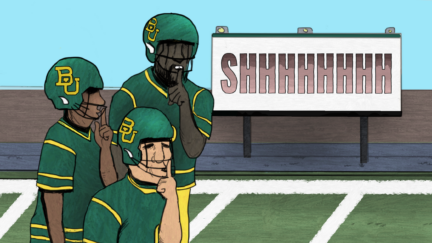
Cover-Up on Campus
While the Baylor University football team was winning on the field, university officials failed to take action when allegations of sexual assault by student athletes emerged.

Covering Female Athletes
Sports Illustrated stirs controversy when their cover photo of an Olympic skier seems to focus more on her physical appearance than her athletic abilities.

Covering Yourself? Journalists and the Bowl Championship
Can news outlets covering the Bowl Championship Series fairly report sports news if their own polls were used to create the news?

Cyber Harassment
After a student defames a middle school teacher on social media, the teacher confronts the student in class and posts a video of the confrontation online.

Defending Freedom of Tweets?
Running back Rashard Mendenhall receives backlash from fans after criticizing the celebration of the assassination of Osama Bin Laden in a tweet.

Dennis Kozlowski: Living Large
Dennis Kozlowski was an effective leader for Tyco in his first few years as CEO, but eventually faced criminal charges over his use of company assets.

Digital Downloads
File-sharing program Napster sparked debate over the legal and ethical dimensions of downloading unauthorized copies of copyrighted music.
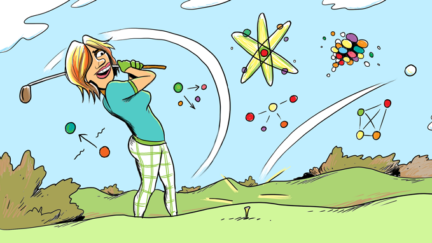
Dr. V’s Magical Putter
Journalist Caleb Hannan outed Dr. V as a trans woman, sparking debate over the ethics of Hannan’s reporting, as well its role in Dr. V’s suicide.
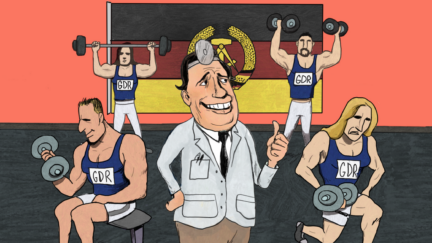
East Germany’s Doping Machine
From 1968 to the late 1980s, East Germany (GDR) doped some 9,000 athletes to gain success in international athletic competitions despite being aware of the unfortunate side effects.

Ebola & American Intervention
Did the dispatch of U.S. military units to Liberia to aid in humanitarian relief during the Ebola epidemic help or hinder the process?
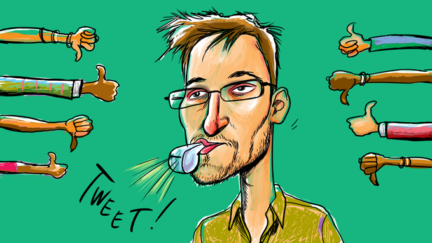
Edward Snowden: Traitor or Hero?
Was Edward Snowden’s release of confidential government documents ethically justifiable?
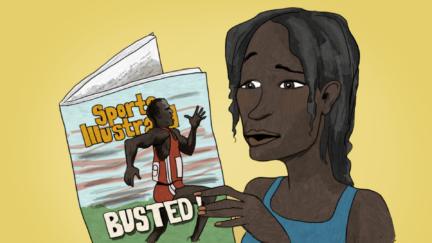
Ethical Pitfalls in Action
Why do good people do bad things? Behavioral ethics is the science of moral decision-making, which explores why and how people make the ethical (and unethical) decisions that they do.

Ethical Use of Home DNA Testing
The rising popularity of at-home DNA testing kits raises questions about privacy and consumer rights.

Flying the Confederate Flag
A heated debate ensues over whether or not the Confederate flag should be removed from the South Carolina State House grounds.

Freedom of Speech on Campus
In the wake of racially motivated offenses, student protests sparked debate over the roles of free speech, deliberation, and tolerance on campus.

Freedom vs. Duty in Clinical Social Work
What should social workers do when their personal values come in conflict with the clients they are meant to serve?
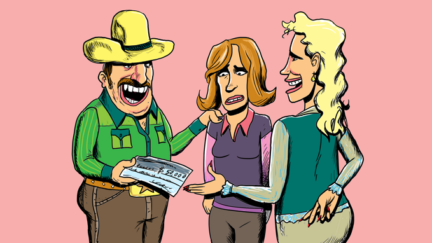
Full Disclosure: Manipulating Donors
When an intern witnesses a donor making a large gift to a non-profit organization under misleading circumstances, she struggles with what to do.
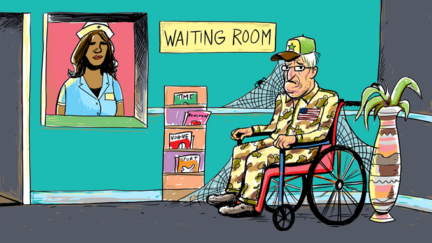
Gaming the System: The VA Scandal
The Veterans Administration’s incentives were meant to spur more efficient and productive healthcare, but not all administrators complied as intended.

German Police Battalion 101
During the Holocaust, ordinary Germans became willing killers even though they could have opted out from murdering their Jewish neighbors.
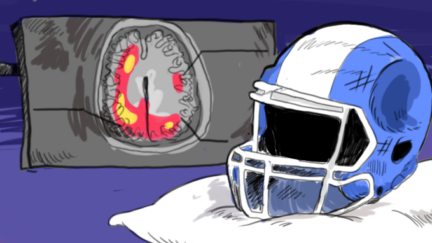
Head Injuries & American Football
Many studies have linked traumatic brain injuries and related conditions to American football, creating controversy around the safety of the sport.

Head Injuries & the NFL
American football is a rough and dangerous game and its impact on the players’ brain health has sparked a hotly contested debate.


Healthcare Obligations: Personal vs. Institutional
A medical doctor must make a difficult decision when informing patients of the effectiveness of flu shots while upholding institutional recommendations.

High Stakes Testing
In the wake of the No Child Left Behind Act, parents, teachers, and school administrators take different positions on how to assess student achievement.
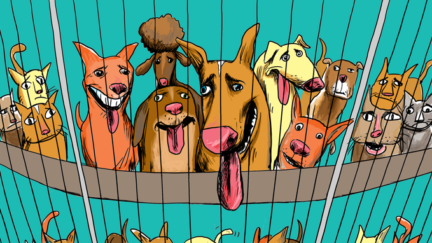
In-FUR-mercials: Advertising & Adoption
When the Lied Animal Shelter faces a spike in animal intake, an advertising agency uses its moral imagination to increase pet adoptions.

Krogh & the Watergate Scandal
Egil Krogh was a young lawyer working for the Nixon Administration whose ethics faded from view when asked to play a part in the Watergate break-in.
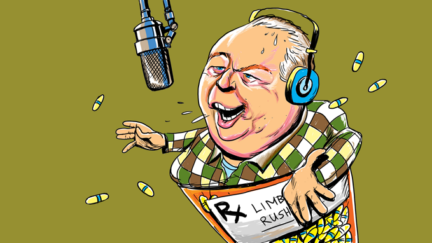
Limbaugh on Drug Addiction
Radio talk show host Rush Limbaugh argued that drug abuse was a choice, not a disease. He later became addicted to painkillers.
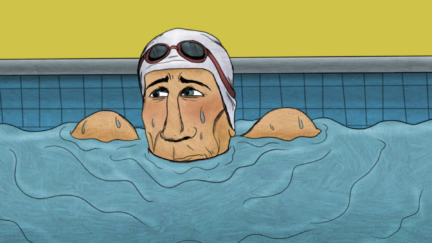
U.S. Olympic swimmer Ryan Lochte’s “over-exaggeration” of an incident at the 2016 Rio Olympics led to very real consequences.
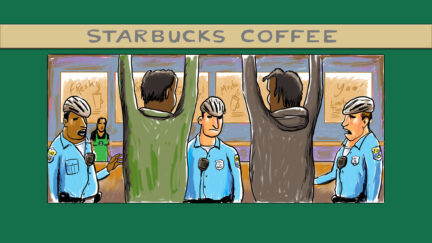
Meet Me at Starbucks
Two black men were arrested after an employee called the police on them, prompting Starbucks to implement “racial-bias” training across all its stores.
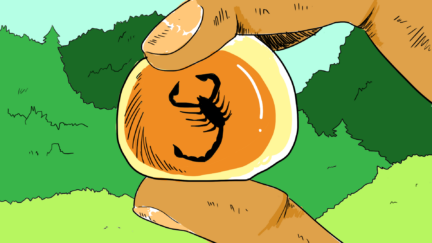
Myanmar Amber
Buying amber could potentially fund an ethnic civil war, but refraining allows collectors to acquire important specimens that could be used for research.

Negotiating Bankruptcy
Bankruptcy lawyer Gellene successfully represented a mining company during a major reorganization, but failed to disclose potential conflicts of interest.
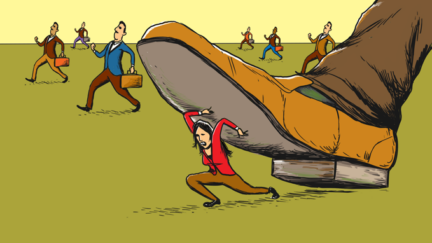
Pao & Gender Bias
Ellen Pao stirred debate in the venture capital and tech industries when she filed a lawsuit against her employer on grounds of gender discrimination.

Pardoning Nixon
One month after Richard Nixon resigned from the presidency, Gerald Ford made the controversial decision to issue Nixon a full pardon.

Patient Autonomy & Informed Consent
Nursing staff and family members struggle with informed consent when taking care of a patient who has been deemed legally incompetent.

Prenatal Diagnosis & Parental Choice
Debate has emerged over the ethics of prenatal diagnosis and reproductive freedom in instances where testing has revealed genetic abnormalities.

Reporting on Robin Williams
After Robin Williams took his own life, news media covered the story in great detail, leading many to argue that such reporting violated the family’s privacy.

Responding to Child Migration
An influx of children migrants posed logistical and ethical dilemmas for U.S. authorities while intensifying ongoing debate about immigration.

Retracting Research: The Case of Chandok v. Klessig
A researcher makes the difficult decision to retract a published, peer-reviewed article after the original research results cannot be reproduced.

Sacking Social Media in College Sports
In the wake of questionable social media use by college athletes, the head coach at University of South Carolina bans his players from using Twitter.
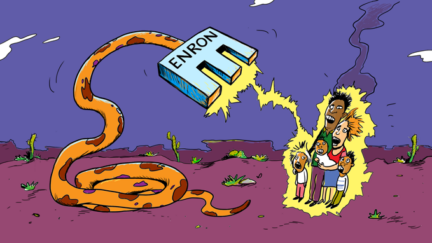
Selling Enron
Following the deregulation of electricity markets in California, private energy company Enron profited greatly, but at a dire cost.

Snyder v. Phelps
Freedom of speech was put on trial in a case involving the Westboro Baptist Church and their protesting at the funeral of U.S. Marine Matthew Snyder.
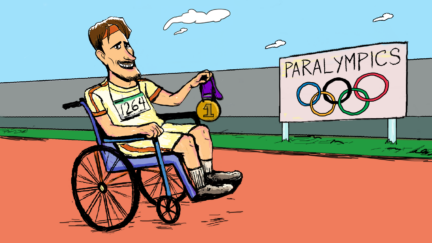
Something Fishy at the Paralympics
Rampant cheating has plagued the Paralympics over the years, compromising the credibility and sportsmanship of Paralympian athletes.

Sports Blogs: The Wild West of Sports Journalism?
Deadspin pays an anonymous source for information related to NFL star Brett Favre, sparking debate over the ethics of “checkbook journalism.”

Stangl & the Holocaust
Franz Stangl was the most effective Nazi administrator in Poland, killing nearly one million Jews at Treblinka, but he claimed he was simply following orders.

Teaching Blackface: A Lesson on Stereotypes
A teacher was put on leave for showing a blackface video during a lesson on racial segregation, sparking discussion over how to teach about stereotypes.

The Astros’ Sign-Stealing Scandal
The Houston Astros rode a wave of success, culminating in a World Series win, but it all came crashing down when their sign-stealing scheme was revealed.
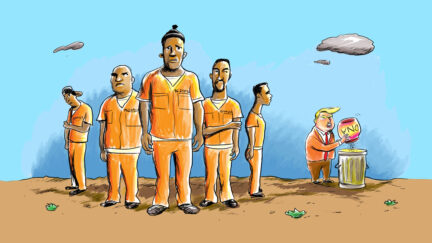
The Central Park Five
Despite the indisputable and overwhelming evidence of the innocence of the Central Park Five, some involved in the case refuse to believe it.

The CIA Leak
Legal and political fallout follows from the leak of classified information that led to the identification of CIA agent Valerie Plame.

The Collapse of Barings Bank
When faced with growing losses, investment banker Nick Leeson took big risks in an attempt to get out from under the losses. He lost.
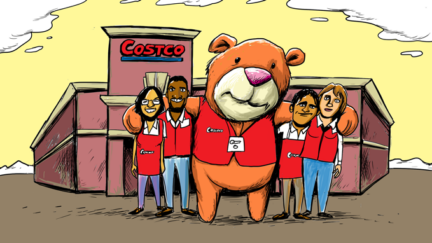
The Costco Model
How can companies promote positive treatment of employees and benefit from leading with the best practices? Costco offers a model.
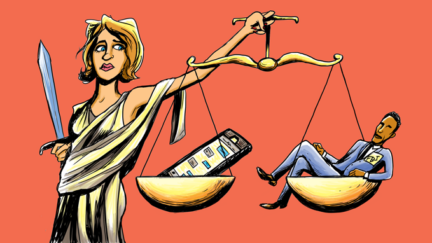
The FBI & Apple Security vs. Privacy
How can tech companies and government organizations strike a balance between maintaining national security and protecting user privacy?

The Miss Saigon Controversy
When a white actor was cast for the half-French, half-Vietnamese character in the Broadway production of Miss Saigon , debate ensued.

The Sandusky Scandal
Following the conviction of assistant coach Jerry Sandusky for sexual abuse, debate continues on how much university officials and head coach Joe Paterno knew of the crimes.

The Varsity Blues Scandal
A college admissions prep advisor told wealthy parents that while there were front doors into universities and back doors, he had created a side door that was worth exploring.

Providing radiation therapy to cancer patients, Therac-25 had malfunctions that resulted in 6 deaths. Who is accountable when technology causes harm?

Welfare Reform
The Welfare Reform Act changed how welfare operated, intensifying debate over the government’s role in supporting the poor through direct aid.

Wells Fargo and Moral Emotions
In a settlement with regulators, Wells Fargo Bank admitted that it had created as many as two million accounts for customers without their permission.
Stay Informed
Support our work.
Note: Since your browser does not support JavaScript, you must press the Continue button once to proceed.
Want to create or adapt books like this? Learn more about how Pressbooks supports open publishing practices.
Chapter 10: Case Study: Animal Welfare and Food Ethics

Since the late 2000s, there have been shifts in faith community attention to environmental issues. As director of Ohio Interfaith Power and Light from 2008 to 2010, it was a challenge to keep up with the active and growing interest of Ohio congregations to learn about and address climate change. But where climate change was perhaps the most popular issue in the late 1990s and early 2000s among environmentally-engaged faith communities, interest shifted in part towards sustainable food systems, as political controversy and well-funded climate denial PR campaigns made climate change more politically and culturally contentious. [1] By the 2010s, new attention and focus had emerged within faith communities to address food system issues, joining the existing engagement of the Jewish Food Movement on a range of issues, and intersecting with ongoing food and animal ethics movements. [2]
Traditionally, there have been several focal points in this area: animal rights and animal welfare; vegetarianism and veganism; food security and food systems associated with human health and nutrition; and environmental justice. Both secular and religious communities and organizations have been engaged in these issues, though with the rise of the environmental movement in the 1970s, the most prominent voices in animal and food choice movements have tended to be non-religious. More recently, religious-environmental concern for food and animal issues has increased [3] , local food movements have multiplied [4] , and veganism and other food-conscientious ideologies have been on the rise. [5]
Diverse and overlapping perspectives give shape to these issues. “Animal rights” views pertain to the legal rights and standing of non-human animals (and typically strictly prohibit harmful treatment or consumptive use of animals) while “animal welfare” perspectives promote the well-being and standards of living and treatment of non-human animals (and usually focus on minimizing the suffering of animals, if not prohibiting the killing of animals). Vegetarianism and veganism are connected to these approaches, as many individuals choose those diets based on their viewpoints on animal rights and welfare, particularly related to farm and laboratory animals. Just as concern has been raised over the welfare and treatment of animals in livestock farming, as well as associated environmental pollution from high concentrations of manure, so too has there been concern for the quality of food and environmental impacts of contemporary food systems, including: concern for the welfare of farm workers (especially migrant farm workers); the nutritional impacts of food deserts in inner cities; opportunities for urban agriculture; and the shortening of farm-to-table food chains through promotion of local food systems. Although these topics deserve much more attention (whole courses and whole books are devoted to these topics), this chapter will aim to introduce some of the dynamics, concepts, and questions raised by these complex areas of concern, scholarship, and action.
Click the links below to explore these topics on the RESTORExchange database.
Food Animals
- Chapter 9 discussed some aspects of the climate denial movement; Robert Brulle’s work is the best known peer-reviewed study of climate denial funding: https://drexel.edu/now/archive/2013/December/Climate-Change/ ↵
- There is a very broad background of religious engagement with food and animal questions, as many religions have dealt in highly specific ways with food and animal issues for thousands of years; the focus of this chapter, however, will tend toward the environmentally salient features of religious, moral, and ethical concerns for food and animals that have vied for widespread attention in American culture since the 1970s. ↵
- The Jewish Food Movement (as described by Nigel Savage at the links above and also here ) is one example; the Oxford Centre for Animal Ethics Religion and Animals Project is another; the American Academy of Religion’s Animals and Religion Unit is another. ↵
- The Ohio and West Virginia Food Hub Network is an example of some of the organizing taking place to support local food systems. ↵
- For example: https://harvardmagazine.com/2017/07/the-rise-of-vegan-culture ↵
Religion and Environmental Values in America Copyright © 2019 by Gregory E Hitzhusen is licensed under a Creative Commons Attribution-NonCommercial 4.0 International License , except where otherwise noted.

Food Ethics
- Harvard Case Studies
Harvard Business Case Studies Solutions – Assignment Help
In most courses studied at Harvard Business schools, students are provided with a case study. Major HBR cases concerns on a whole industry, a whole organization or some part of organization; profitable or non-profitable organizations. Student’s role is to analyze the case and diagnose the situation, identify the problem and then give appropriate recommendations and steps to be taken.
To make a detailed case analysis, student should follow these steps:
STEP 1: Reading Up Harvard Case Study Method Guide:
Case study method guide is provided to students which determine the aspects of problem needed to be considered while analyzing a case study. It is very important to have a thorough reading and understanding of guidelines provided. However, poor guide reading will lead to misunderstanding of case and failure of analyses. It is recommended to read guidelines before and after reading the case to understand what is asked and how the questions are to be answered. Therefore, in-depth understanding f case guidelines is very important.
Harvard Case Study Solutions
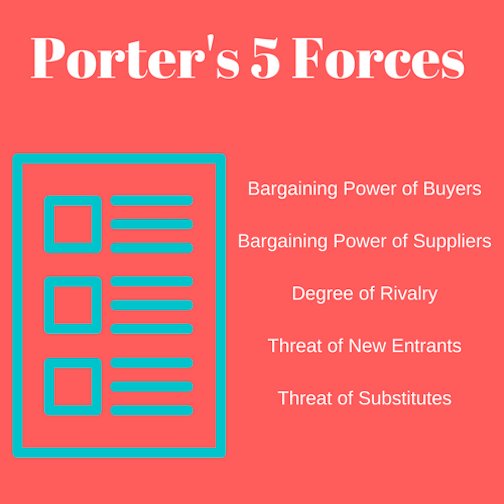
porter’s five forces model
STEP 2: Reading The Food Ethics Harvard Case Study:
To have a complete understanding of the case, one should focus on case reading. It is said that case should be read two times. Initially, fast reading without taking notes and underlines should be done. Initial reading is to get a rough idea of what information is provided for the analyses. Then, a very careful reading should be done at second time reading of the case. This time, highlighting the important point and mark the necessary information provided in the case. In addition, the quantitative data in case, and its relations with other quantitative or qualitative variables should be given more importance. Also, manipulating different data and combining with other information available will give a new insight. However, all of the information provided is not reliable and relevant.
When having a fast reading, following points should be noted:
- Nature of organization
- Nature if industry in which organization operates.
- External environment that is effecting organization
- Problems being faced by management
- Identification of communication strategies.
- Any relevant strategy that can be added.
- Control and out-of-control situations.
When reading the case for second time, following points should be considered:
- Decisions needed to be made and the responsible Person to make decision.
- Objectives of the organization and key players in this case.
- The compatibility of objectives. if not, their reconciliations and necessary redefinition.
- Sources and constraints of organization from meeting its objectives.
After reading the case and guidelines thoroughly, reader should go forward and start the analyses of the case.
STEP 3: Doing The Case Analysis Of Food Ethics:
To make an appropriate case analyses, firstly, reader should mark the important problems that are happening in the organization. There may be multiple problems that can be faced by any organization. Secondly, after identifying problems in the company, identify the most concerned and important problem that needed to be focused.
Firstly, the introduction is written. After having a clear idea of what is defined in the case, we deliver it to the reader. It is better to start the introduction from any historical or social context. The challenging diagnosis for Food Ethics and the management of information is needed to be provided. However, introduction should not be longer than 6-7 lines in a paragraph. As the most important objective is to convey the most important message for to the reader.
After introduction, problem statement is defined. In the problem statement, the company’s most important problem and constraints to solve these problems should be define clearly. However, the problem should be concisely define in no more than a paragraph. After defining the problems and constraints, analysis of the case study is begin.
STEP 4: SWOT Analysis of the Food Ethics HBR Case Solution:
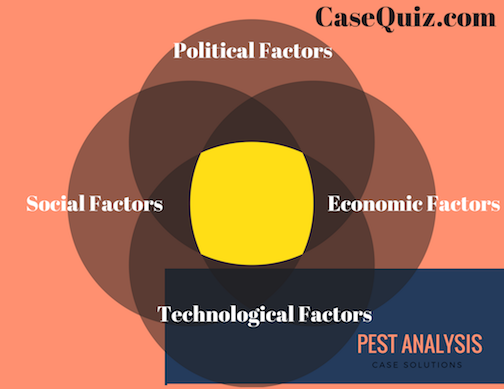
- Pest analysis
SWOT analysis helps the business to identify its strengths and weaknesses, as well as understanding of opportunity that can be availed and the threat that the company is facing. SWOT for Food Ethics is a powerful tool of analysis as it provide a thought to uncover and exploit the opportunities that can be used to increase and enhance company’s operations. In addition, it also identifies the weaknesses of the organization that will help to be eliminated and manage the threats that would catch the attention of the management.
This strategy helps the company to make any strategy that would differentiate the company from competitors, so that the organization can compete successfully in the industry. The strengths and weaknesses are obtained from internal organization. Whereas, the opportunities and threats are generally related from external environment of organization. Moreover, it is also called Internal-External Analysis.
In the strengths, management should identify the following points exists in the organization:
- Advantages of the organization
- Activities of the company better than competitors.
- Unique resources and low cost resources company have.
- Activities and resources market sees as the company’s strength.
- Unique selling proposition of the company.
WEAKNESSES:
- Improvement that could be done.
- Activities that can be avoided for Food Ethics.
- Activities that can be determined as your weakness in the market.
- Factors that can reduce the sales.
- Competitor’s activities that can be seen as your weakness.
OPPORTUNITIES:
- Good opportunities that can be spotted.
- Interesting trends of industry.
- Change in technology and market strategies
- Government policy changes that is related to the company’s field
- Changes in social patterns and lifestyles.
- Local events.
Following points can be identified as a threat to company:
- Company’s facing obstacles.
- Activities of competitors.
- Product and services quality standards
- Threat from changing technologies
- Financial/cash flow problems
- Weakness that threaten the business.
Following points should be considered when applying SWOT to the analysis:
- Precise and verifiable phrases should be sued.
- Prioritize the points under each head, so that management can identify which step has to be taken first.
- Apply the analyses at proposed level. Clear yourself first that on what basis you have to apply SWOT matrix.
- Make sure that points identified should carry itself with strategy formulation process.
- Use particular terms (like USP, Core Competencies Analyses etc.) to get a comprehensive picture of analyses.
STEP 5: PESTEL/ PEST Analysis of Food Ethics Case Solution:

Pest analyses is a widely used tool to analyze the Political, Economic, Socio-cultural, Technological, Environmental and legal situations which can provide great and new opportunities to the company as well as these factors can also threat the company, to be dangerous in future.
Pest analysis is very important and informative. It is used for the purpose of identifying business opportunities and advance threat warning. Moreover, it also helps to the extent to which change is useful for the company and also guide the direction for the change. In addition, it also helps to avoid activities and actions that will be harmful for the company in future, including projects and strategies.
To analyze the business objective and its opportunities and threats, following steps should be followed:
- Brainstorm and assumption the changes that should be made to organization. Answer the necessary questions that are related to specific needs of organization
- Analyze the opportunities that would be happen due to the change.
- Analyze the threats and issues that would be caused due to change.
- Perform cost benefit analyses and take the appropriate action.
PEST FACTORS:
- Next political elections and changes that will happen in the country due to these elections
- Strong and powerful political person, his point of view on business policies and their effect on the organization.
- Strength of property rights and law rules. And its ratio with corruption and organized crimes. Changes in these situation and its effects.
- Change in Legislation and taxation effects on the company
- Trend of regulations and deregulations. Effects of change in business regulations
- Timescale of legislative change.
- Other political factors likely to change for Food Ethics.
ECONOMICAL:
- Position and current economy trend i.e. growing, stagnant or declining.
- Exchange rates fluctuations and its relation with company.
- Change in Level of customer’s disposable income and its effect.
- Fluctuation in unemployment rate and its effect on hiring of skilled employees
- Access to credit and loans. And its effects on company
- Effect of globalization on economic environment
- Considerations on other economic factors
SOCIO-CULTURAL:
- Change in population growth rate and age factors, and its impacts on organization.
- Effect on organization due to Change in attitudes and generational shifts.
- Standards of health, education and social mobility levels. Its changes and effects on company.
- Employment patterns, job market trend and attitude towards work according to different age groups.
case study solutions
- Social attitudes and social trends, change in socio culture an dits effects.
- Religious believers and life styles and its effects on organization
- Other socio culture factors and its impacts.
TECHNOLOGICAL:
- Any new technology that company is using
- Any new technology in market that could affect the work, organization or industry
- Access of competitors to the new technologies and its impact on their product development/better services.
- Research areas of government and education institutes in which the company can make any efforts
- Changes in infra-structure and its effects on work flow
- Existing technology that can facilitate the company
- Other technological factors and their impacts on company and industry
These headings and analyses would help the company to consider these factors and make a “big picture” of company’s characteristics. This will help the manager to take the decision and drawing conclusion about the forces that would create a big impact on company and its resources.
STEP 6: Porter’s Five Forces/ Strategic Analysis Of The Food Ethics Case Study:
To analyze the structure of a company and its corporate strategy, Porter’s five forces model is used. In this model, five forces have been identified which play an important part in shaping the market and industry. These forces are used to measure competition intensity and profitability of an industry and market.
porter’s five forces model
These forces refers to micro environment and the company ability to serve its customers and make a profit. These five forces includes three forces from horizontal competition and two forces from vertical competition. The five forces are discussed below:
- THREAT OF NEW ENTRANTS:
- as the industry have high profits, many new entrants will try to enter into the market. However, the new entrants will eventually cause decrease in overall industry profits. Therefore, it is necessary to block the new entrants in the industry. following factors is describing the level of threat to new entrants:
- Barriers to entry that includes copy rights and patents.
- High capital requirement
- Government restricted policies
- Switching cost
- Access to suppliers and distributions
- Customer loyalty to established brands.
- THREAT OF SUBSTITUTES:
- this describes the threat to company. If the goods and services are not up to the standard, consumers can use substitutes and alternatives that do not need any extra effort and do not make a major difference. For example, using Aquafina in substitution of tap water, Pepsi in alternative of Coca Cola. The potential factors that made customer shift to substitutes are as follows:
- Price performance of substitute
- Switching costs of buyer
- Products substitute available in the market
- Reduction of quality
- Close substitution are available
- DEGREE OF INDUSTRY RIVALRY:
- the lesser money and resources are required to enter into any industry, the higher there will be new competitors and be an effective competitor. It will also weaken the company’s position. Following are the potential factors that will influence the company’s competition:
- Competitive advantage
- Continuous innovation
- Sustainable position in competitive advantage
- Level of advertising
- Competitive strategy
- BARGAINING POWER OF BUYERS:
- it deals with the ability of customers to take down the prices. It mainly consists the importance of a customer and the level of cost if a customer will switch from one product to another. The buyer power is high if there are too many alternatives available. And the buyer power is low if there are lesser options of alternatives and switching. Following factors will influence the buying power of customers:
- Bargaining leverage
- Switching cost of a buyer
- Buyer price sensitivity
- Competitive advantage of company’s product
- BARGAINING POWER OF SUPPLIERS:
- this refers to the supplier’s ability of increasing and decreasing prices. If there are few alternatives o supplier available, this will threat the company and it would have to purchase its raw material in supplier’s terms. However, if there are many suppliers alternative, suppliers have low bargaining power and company do not have to face high switching cost. The potential factors that effects bargaining power of suppliers are the following:
- Input differentiation
- Impact of cost on differentiation
- Strength of distribution centers
- Input substitute’s availability.
STEP 7: VRIO Analysis of Food Ethics:
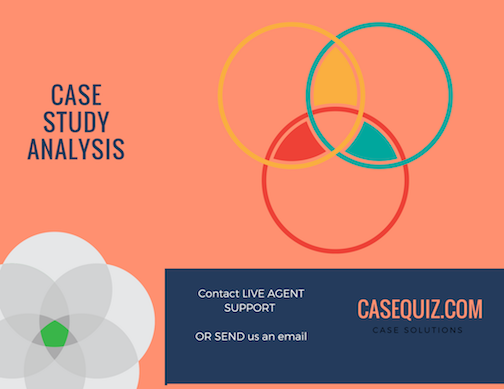
Vrio analysis for Food Ethics case study identified the four main attributes which helps the organization to gain a competitive advantages. The author of this theory suggests that firm must be valuable, rare, imperfectly imitable and perfectly non sustainable. Therefore there must be some resources and capabilities in an organization that can facilitate the competitive advantage to company. The four components of VRIO analysis are described below: VALUABLE: the company must have some resources or strategies that can exploit opportunities and defend the company from major threats. If the company holds some value then answer is yes. Resources are also valuable if they provide customer satisfaction and increase customer value. This value may create by increasing differentiation in existing product or decrease its price. Is these conditions are not met, company may lead to competitive disadvantage. Therefore, it is necessary to continually review the Food Ethics company’s activities and resources values. RARE: the resources of the Food Ethics company that are not used by any other company are known as rare. Rare and valuable resources grant much competitive advantages to the firm. However, when more than one few companies uses the same resources and provide competitive parity are also known as rare resources. Even, the competitive parity is not desired position, but the company should not lose its valuable resources, even they are common. COSTLY TO IMITATE: the resources are costly to imitate, if other organizations cannot imitate it. However, imitation is done in two ways. One is duplicating that is direct imitation and the other one is substituting that is indirect imitation. Any firm who has valuable and rare resources, and these resources are costly to imitate, have achieved their competitive advantage. However, resources should also be perfectly non sustainable. The reasons that resource imitation is costly are historical conditions, casual ambiguity and social complexity. ORGANIZED TO CAPTURE VALUE: resources, itself, cannot provide advantages to organization until it is organized and exploit to do so. A firm (like Food Ethics) must organize its management systems, processes, policies and strategies to fully utilize the resource’s potential to be valuable, rare and costly to imitate.
STEP 8: Generating Alternatives For Food Ethics Case Solution:
After completing the analyses of the company, its opportunities and threats, it is important to generate a solution of the problem and the alternatives a company can apply in order to solve its problems. To generate the alternative of problem, following things must to be kept in mind:
- Realistic solution should be identified that can be operated in the company, with all its constraints and opportunities.
- as the problem and its solution cannot occur at the same time, it should be described as mutually exclusive
- it is not possible for a company to not to take any action, therefore, the alternative of doing nothing is not viable.
- Student should provide more than one decent solution. Providing two undesirable alternatives to make the other one attractive is not acceptable.
Once the alternatives have been generated, student should evaluate the options and select the appropriate and viable solution for the company.
STEP 9: Selection Of Alternatives For Food Ethics Case Solution:
It is very important to select the alternatives and then evaluate the best one as the company have limited choices and constraints. Therefore to select the best alternative, there are many factors that is needed to be kept in mind. The criteria’s on which business decisions are to be selected areas under:
- Improve profitability
- Increase sales, market shares, return on investments
- Customer satisfaction
- Brand image
- Corporate mission, vision and strategy
- Resources and capabilities
Alternatives should be measures that which alternative will perform better than other one and the valid reasons. In addition, alternatives should be related to the problem statements and issues described in the case study.
STEP 10: Evaluation Of Alternatives For Food Ethics Case Solution:
If the selected alternative is fulfilling the above criteria, the decision should be taken straightforwardly. Best alternative should be selected must be the best when evaluating it on the decision criteria. Another method used to evaluate the alternatives are the list of pros and cons of each alternative and one who has more pros than cons and can be workable under organizational constraints.
STEP 11: Recommendations For Food Ethics Case Study (Solution):
There should be only one recommendation to enhance the company’s operations and its growth or solving its problems. The decision that is being taken should be justified and viable for solving the problems.
- Today's news
- Reviews and deals
- Climate change
- 2024 election
- Fall allergies
- Health news
- Mental health
- Sexual health
- Family health
- So mini ways
- Unapologetically
- Buying guides
Entertainment
- How to Watch
- My watchlist
- Stock market
- Biden economy
- Personal finance
- Stocks: most active
- Stocks: gainers
- Stocks: losers
- Trending tickers
- World indices
- US Treasury bonds
- Top mutual funds
- Highest open interest
- Highest implied volatility
- Currency converter
- Basic materials
- Communication services
- Consumer cyclical
- Consumer defensive
- Financial services
- Industrials
- Real estate
- Mutual funds
- Credit cards
- Balance transfer cards
- Cash back cards
- Rewards cards
- Travel cards
- Online checking
- High-yield savings
- Money market
- Home equity loan
- Personal loans
- Student loans
- Options pit
- Fantasy football
- Pro Pick 'Em
- College Pick 'Em
- Fantasy baseball
- Fantasy hockey
- Fantasy basketball
- Download the app
- Daily fantasy
- Scores and schedules
- GameChannel
- World Baseball Classic
- Premier League
- CONCACAF League
- Champions League
- Motorsports
- Horse racing
- Newsletters
New on Yahoo
- Privacy Dashboard
A New Study Finds This One Food Habit Has a Huge Impact on Cognitive Decline
Yet another new study has found a link between diet and brain health .
Nature Mental Health reports that a study of 181,990 participants in the U.K. (with an average age of about 70) showed a link between a balanced, healthy diet and a balanced, healthy mind.
The study, done largely via questionnaire, divided food up into 10 different groups—including fruits, vegetables, meat and alcohol—and used data from sources including blood metabolic markers, brain imaging, cognitive function tests (which can help assess memory, attention span and reasoning) and genetic testing to check for links between different dietary choices and brain health.
The results were a doozy, but in a good way: Just like diversifying your bonds is great for your bank account, diversifying your food is great for your brain. According to the study, participants who had a varied diet scored higher on cognitive tests that measured reaction time, problem-solving skills and memory. The same participants also reported having fewer depression or anxiety symptoms than participants whose diets weren't as balanced. Study participants with a varied diet showed higher levels of grey matter, associated with intelligence and protection from neurodegenerative illnesses and conditions.
Related: 'I've Spent 40 Years Studying the Brain, and This Is the #1 Habit I Recommend for Memory Retention'
The news doesn't surprise Dr. Scott Kaiser, MD , family physician and geriatrician at Pacific Neuroscience Institute , and he recommends getting started right now on improving your diet for the sake of your brain.
"Lifestyle and nutritional choices play a key role in maintaining and improving brain health and are the cornerstone of any strategy to reduce the risk of cognitive decline and dementia," he tells Parade . "This is particularly important when it comes to broad risk reduction strategies aimed at reducing the overall burden of dementia. It is believed that something on the order of 40% of all dementia cases could theoretically be prevented, or significantly delayed, if a constellation of key risk factors were eliminated; many of them, including hypertension , diabetes , obesity and other metabolic conditions for which dietary and lifestyle factors play a key role."
The importance of food for brain health and the need to make changes sooner rather than later can't be overstated, according to Dr. Kaiser.
"Considering the predictions of rising numbers of people who will be impacted—worldwide dementia cases are projected to triple by 2050 to over 150 million people—we need to start thinking now, and on a massive scale, about the best possible strategies and approaches to prevent dementia. An ounce of prevention is well worth more than a pound of cure."
Find out the best way to do just that.
Related: A Change in This Daily Habit Could Be an Early Sign of Dementia, According to New Research
Does Diet Impact Brain Health, or Is This a Case of Correlation Over Causation?
The short answer: Diet probably impacts your brain, though science changes often, so most are loath to give a truly definitive answer. That said, Dr. Kaiser tells us it's safe to trust this overall.
"A growing body of evidence clearly supports a strong correlation between diet and brain health," Dr. Kaiser explained. "While this study, and other related cornerstone studies in this field, may not be designed to specifically establish causation, there are many clear causal pathways and plausible biological mechanisms that support the likelihood that various diets and nutritional factors may either be protective of our brain health or accelerate cognitive decline and otherwise impact our mental well-being."
What's more, Dr. Kaiser says, there's an entire field of study dedicated to food as brain fuel.
"The biological impacts of what we eat on our bodies, and especially our brains, are profound and an area of great interest," he notes. "In fact, the field of nutritional psychiatry is dedicated to understanding such connections—how what we eat might impact our mood, memory, thinking, and overall brain health—and how we can use this knowledge to improve our overall health and well-being."
Related: Maria Shriver on the Importance of a Brain-Healthy Lifestyle and Eating to Fight Dementia
What Makes Certain Foods Better for Brain Health Than Others?
Experts agree that foods that fight inflammation are some of the best for your brain. "Foods like berries, dark leafy greens, and olive oil are rich with anti-oxidant properties which help reduce inflammation," registered dietitian Shannon O’Meara, RD, MS , of Orlando Health , tells us. "The brain is very metabolically active and produces substances that cause inflammation, which is why you want to consume more antioxidant-rich foods."
Dr. Kaiser concurs that antioxidant-rich foods are great for the brain. He also notes that the connection between gut and brain health is impacted by diet, and that it's important to be mindful of what we eat—but not to deprive ourselves, either.
"As I guide patients interested in improving their brain health, we often begin by reviewing their diet, like the foods they typically eat or those they may avoid. This represents one of the most fundamental aspects of coming to understand how our lifestyles might influence our health and well-being and critical information needed to develop a personalized strategy to optimize brain health," he says. "The idea here is not about any fads or diets in what has come to be a traditional sense of the word 'restriction,' typically with the goal of weight loss—but in terms of the totality of what we consume and the influence this may have."
"While we might consider the amount of certain nutrients that might be included in one’s diet, for the most part, the focus is really on foods and food groups overall rather than any one isolated part," he adds. "With this, we can begin to find ways to add on certain brain-nourishing foods that can help maintain a healthy and balanced metabolism, deal with physiologic and 'oxidative' stress, support more resilient brains, and even help us grow new brain cells and connections between those cells 'synaptic connections' for a healthy and high-performing neural network."
Related: 'I'm a Neurologist—This Is the Vegetable I Eat Every Day for Brain Health'
What Foods Are Worst for Brain Health?
O'Meara and Dr. Kaiser agree: Sugary, ultra-processed foods are the worst for brain health .
"Foods I recommend to limit are foods high in saturated fat, sodium and added sugar," O'Meara advises. "Try to limit how much you consume of animal fat, poultry skin, full fat dairy products, and foods with high amounts of added sugar and salt. These foods cause more inflammation in the body and can lead to chronic inflammatory diseases like heart disease and diabetes along with impacting your brain health."
"Mounting evidence points to the harmful effects of ultra-processed foods on cognition and overall brain health," Dr. Kaiser warns. "Within our practice, the Pacific Brain Health Center, we’ve long been encouraging patients to avoid highly processed foods and supporting them in adopting and maintaining healthier diets as a critical component of preventing, or slowing, cognitive decline; with this, recognizing such nutritional changes as a cornerstone of a brain-healthy lifestyle strategy. The evidence supporting the negative impacts of out-processed foods on cognition and brain health builds upon the well-established links between ultra-processed food consumption and increased risk of cardiovascular disease, metabolic syndrome and obesity."
Highly processed and refined foods are often low in fiber, digested quickly and can cause large swings in our blood sugar levels," he adds. "These blood sugar fluctuations, and the broad constellation of physiologic consequences with our body’s response, can increase inflammation and oxidative stress and have many other deleterious effects upon our brain health."
Dr. Kaiser tells us that sugars and sweeteners in highly processed foods are some of the worst ingredients for your brain. "Sugars are Enemy No. 1," Dr. Kaiser says. "Processed 'junk foods' including snacks, cookies, cakes, donuts, candy, pastries and other sweets, can include many ingredients—not the least of which are large quantities of highly refined sugars—that can have immediate and long-term negative impacts on brain health."
Enemy No. 2 per Dr. Kaiser would be trans fats, especially from fast food or other fried foods.
"Studies have demonstrated clear links between trans fats and many diseases, including heart disease and Alzheimer’s disease," he says. "The research on saturated fats is a little more murky but there are clear indications that eating too much saturated fat—especially certain kinds—is associated with poor brain health."
Related: 'I'm a Cleveland Clinic Neuropsychologist—Here's What I Wish Every Woman Knew About Their Risk for Alzheimer's and Dementia'
What Diets Are Best for Brain Health?
When it comes to eating for your brain, O'Meara and Dr. Kaiser are both big fans of the "MIND Diet," and not just for the ultra-clever name. It combines elements of the Mediterranean Diet and the DASH (Dietary Approaches to Stop Hypertension) Diet and stands for "Mediterranean-DASH Intervention for Neurodegenerative Delay." According to Dr. Kaiser, the MIND Diet has been demonstrated to slow brain aging by about 7.5 years and may also reduce one's Alzheimer's risk.
"The MIND Diet recommends eating whole grains, vegetables, green leafy vegetables, nuts , berries, beans, poultry, fish and olive oil and limiting pastries and sweets, red meat, cheese, fried foods, butter and margarine," O'Meara says. "The Mediterranean Diet is also a good diet to follow which include a lot of the foods the MIND Diet recommends."
In terms of how it works: "The MIND Diet appears to benefit the brain by reducing beta-amyloid proteins (a build-up of which is found in the brains of people with Alzheimer’s disease), reduction in oxidative stress and improved sugar regulation and overall metabolic profiles that are supportive of immediate and long-term optimal brain health," Dr. Kaiser says.
One aspect of the MIND Diet that sets it apart from some other common diets is that it doesn't call for a complete nixing of red meat—with Dr. Kaiser pointing out that eliminating red meat can make some miss out on important nutrients like zinc or compensate too much for its lack with refined carbs. Instead, the MIND Diet recommends limiting your red meat (beef, lamb and pork) intake to three weekly servings.
Related: The Best Foods for Memory, According to Brain Health Experts
What Are the Best Foods for Brain Health?
O'Meara and Dr. Kaiser agree that the best foods for brain health are rich in antioxidants and flavonoids, which have been associated with lower Alzheimer's risk.
"These 'phytonutrients'—chemicals that plants produce to keep themselves healthy—can actually reduce inflammation in our brains, protect brain cells from injury, support learning and memory and deliver other obvious benefits for brain health," Dr. Kaiser says. "As far as flavanols, a specific type of flavonoid that are highly protective, apples are on the list; so 'an apple a day' really may keep the doctor away (just add some kale and a handful of blueberries and call me in the morning)."
That said, just some of the best foods for brain health (including from the Mediterranean Diet ) include:
Black beans
Blackberries
Blueberries
Canned light tuna
Collard greens
Cottage cheese
Dark chocolate
Pumpkin seeds
Raspberries
Red cabbage
Red peppers
Strawberries
Whole grain bread
Phew—you have plenty of options! Now get to the grocery store and start meal-prepping for that mind of yours.
Next, Research Says You Can Lower Your Dementia Risk 33% By Doing This One Thing
"Associations of dietary patterns with brain health from behavioral, neuroimaging, biochemical and genetic analyses," Nature Mental Health
Scott Kaiser, MD, family physician and geriatrician at Pacific Neuroscience Institute
Shannon O’Meara, RD, MS, Orlando Health

- Advanced Search
A new bi-level mathematical model for government-farmer interaction regarding food security and environmental damages of pesticides and fertilizers: : Case study of rice supply chain in Iran
New citation alert added.
This alert has been successfully added and will be sent to:
You will be notified whenever a record that you have chosen has been cited.
To manage your alert preferences, click on the button below.
New Citation Alert!
Please log in to your account
Information & Contributors
Bibliometrics & citations, view options, recommendations, designing and solving a bi-level model for rice supply chain using the evolutionary algorithms.
- A bi-level mathematical model is firstly formulated for the rice supply chain.
According to the recent gigantic development in the agricultural section, Agricultural Supply Chain (ASC) management has attracted both researchers and agronomic practitioners. In this regard, rice as one of the important agricultural ...
Toward farmer decision profiles to improve food security in Kenya
The decision-making processes of small-scale farmers are frequently ignored in discussions about food security in sub-Saharan Africa. Consequently, policies intended to improve land productivity often fail or produce ambiguous results regarding their ...
Sensitivity and uncertainty propagation in coupled models for assessing smallholder farmer food security in the Olifants River Basin, South Africa
Using family balance (i.e., combined net farm and non-farm incomes less family expenses), an output from an integrated model, which couples water resource, agronomic and socio-economic models, its sensitivity and uncertainty are evaluated for five ...
Information
Published in.
Elsevier Science Publishers B. V.
Netherlands
Publication History
Author tags.
- Agricultural supply chain
- Multiple cropping
- Bilevel optimization
- Government-Farmer confrontation
- Economic and environmental objectives
- Research-article
Contributors
Other metrics, bibliometrics, article metrics.
- 0 Total Citations
- 0 Total Downloads
- Downloads (Last 12 months) 0
- Downloads (Last 6 weeks) 0
View options
Login options.
Check if you have access through your login credentials or your institution to get full access on this article.
Full Access
Share this publication link.
Copying failed.
Share on social media
Affiliations, export citations.
- Please download or close your previous search result export first before starting a new bulk export. Preview is not available. By clicking download, a status dialog will open to start the export process. The process may take a few minutes but once it finishes a file will be downloadable from your browser. You may continue to browse the DL while the export process is in progress. Download
- Download citation
- Copy citation
We are preparing your search results for download ...
We will inform you here when the file is ready.
Your file of search results citations is now ready.
Your search export query has expired. Please try again.
Human Subjects Office
Medical terms in lay language.
Please use these descriptions in place of medical jargon in consent documents, recruitment materials and other study documents. Note: These terms are not the only acceptable plain language alternatives for these vocabulary words.
This glossary of terms is derived from a list copyrighted by the University of Kentucky, Office of Research Integrity (1990).
For clinical research-specific definitions, see also the Clinical Research Glossary developed by the Multi-Regional Clinical Trials (MRCT) Center of Brigham and Women’s Hospital and Harvard and the Clinical Data Interchange Standards Consortium (CDISC) .
Alternative Lay Language for Medical Terms for use in Informed Consent Documents
A B C D E F G H I J K L M N O P Q R S T U V W X Y Z
ABDOMEN/ABDOMINAL body cavity below diaphragm that contains stomach, intestines, liver and other organs ABSORB take up fluids, take in ACIDOSIS condition when blood contains more acid than normal ACUITY clearness, keenness, esp. of vision and airways ACUTE new, recent, sudden, urgent ADENOPATHY swollen lymph nodes (glands) ADJUVANT helpful, assisting, aiding, supportive ADJUVANT TREATMENT added treatment (usually to a standard treatment) ANTIBIOTIC drug that kills bacteria and other germs ANTIMICROBIAL drug that kills bacteria and other germs ANTIRETROVIRAL drug that works against the growth of certain viruses ADVERSE EFFECT side effect, bad reaction, unwanted response ALLERGIC REACTION rash, hives, swelling, trouble breathing AMBULATE/AMBULATION/AMBULATORY walk, able to walk ANAPHYLAXIS serious, potentially life-threatening allergic reaction ANEMIA decreased red blood cells; low red cell blood count ANESTHETIC a drug or agent used to decrease the feeling of pain, or eliminate the feeling of pain by putting you to sleep ANGINA pain resulting from not enough blood flowing to the heart ANGINA PECTORIS pain resulting from not enough blood flowing to the heart ANOREXIA disorder in which person will not eat; lack of appetite ANTECUBITAL related to the inner side of the forearm ANTIBODY protein made in the body in response to foreign substance ANTICONVULSANT drug used to prevent seizures ANTILIPEMIC a drug that lowers fat levels in the blood ANTITUSSIVE a drug used to relieve coughing ARRHYTHMIA abnormal heartbeat; any change from the normal heartbeat ASPIRATION fluid entering the lungs, such as after vomiting ASSAY lab test ASSESS to learn about, measure, evaluate, look at ASTHMA lung disease associated with tightening of air passages, making breathing difficult ASYMPTOMATIC without symptoms AXILLA armpit
BENIGN not malignant, without serious consequences BID twice a day BINDING/BOUND carried by, to make stick together, transported BIOAVAILABILITY the extent to which a drug or other substance becomes available to the body BLOOD PROFILE series of blood tests BOLUS a large amount given all at once BONE MASS the amount of calcium and other minerals in a given amount of bone BRADYARRHYTHMIAS slow, irregular heartbeats BRADYCARDIA slow heartbeat BRONCHOSPASM breathing distress caused by narrowing of the airways
CARCINOGENIC cancer-causing CARCINOMA type of cancer CARDIAC related to the heart CARDIOVERSION return to normal heartbeat by electric shock CATHETER a tube for withdrawing or giving fluids CATHETER a tube placed near the spinal cord and used for anesthesia (indwelling epidural) during surgery CENTRAL NERVOUS SYSTEM (CNS) brain and spinal cord CEREBRAL TRAUMA damage to the brain CESSATION stopping CHD coronary heart disease CHEMOTHERAPY treatment of disease, usually cancer, by chemical agents CHRONIC continuing for a long time, ongoing CLINICAL pertaining to medical care CLINICAL TRIAL an experiment involving human subjects COMA unconscious state COMPLETE RESPONSE total disappearance of disease CONGENITAL present before birth CONJUNCTIVITIS redness and irritation of the thin membrane that covers the eye CONSOLIDATION PHASE treatment phase intended to make a remission permanent (follows induction phase) CONTROLLED TRIAL research study in which the experimental treatment or procedure is compared to a standard (control) treatment or procedure COOPERATIVE GROUP association of multiple institutions to perform clinical trials CORONARY related to the blood vessels that supply the heart, or to the heart itself CT SCAN (CAT) computerized series of x-rays (computerized tomography) CULTURE test for infection, or for organisms that could cause infection CUMULATIVE added together from the beginning CUTANEOUS relating to the skin CVA stroke (cerebrovascular accident)
DERMATOLOGIC pertaining to the skin DIASTOLIC lower number in a blood pressure reading DISTAL toward the end, away from the center of the body DIURETIC "water pill" or drug that causes increase in urination DOPPLER device using sound waves to diagnose or test DOUBLE BLIND study in which neither investigators nor subjects know what drug or treatment the subject is receiving DYSFUNCTION state of improper function DYSPLASIA abnormal cells
ECHOCARDIOGRAM sound wave test of the heart EDEMA excess fluid collecting in tissue EEG electric brain wave tracing (electroencephalogram) EFFICACY effectiveness ELECTROCARDIOGRAM electrical tracing of the heartbeat (ECG or EKG) ELECTROLYTE IMBALANCE an imbalance of minerals in the blood EMESIS vomiting EMPIRIC based on experience ENDOSCOPIC EXAMINATION viewing an internal part of the body with a lighted tube ENTERAL by way of the intestines EPIDURAL outside the spinal cord ERADICATE get rid of (such as disease) Page 2 of 7 EVALUATED, ASSESSED examined for a medical condition EXPEDITED REVIEW rapid review of a protocol by the IRB Chair without full committee approval, permitted with certain low-risk research studies EXTERNAL outside the body EXTRAVASATE to leak outside of a planned area, such as out of a blood vessel
FDA U.S. Food and Drug Administration, the branch of federal government that approves new drugs FIBROUS having many fibers, such as scar tissue FIBRILLATION irregular beat of the heart or other muscle
GENERAL ANESTHESIA pain prevention by giving drugs to cause loss of consciousness, as during surgery GESTATIONAL pertaining to pregnancy
HEMATOCRIT amount of red blood cells in the blood HEMATOMA a bruise, a black and blue mark HEMODYNAMIC MEASURING blood flow HEMOLYSIS breakdown in red blood cells HEPARIN LOCK needle placed in the arm with blood thinner to keep the blood from clotting HEPATOMA cancer or tumor of the liver HERITABLE DISEASE can be transmitted to one’s offspring, resulting in damage to future children HISTOPATHOLOGIC pertaining to the disease status of body tissues or cells HOLTER MONITOR a portable machine for recording heart beats HYPERCALCEMIA high blood calcium level HYPERKALEMIA high blood potassium level HYPERNATREMIA high blood sodium level HYPERTENSION high blood pressure HYPOCALCEMIA low blood calcium level HYPOKALEMIA low blood potassium level HYPONATREMIA low blood sodium level HYPOTENSION low blood pressure HYPOXEMIA a decrease of oxygen in the blood HYPOXIA a decrease of oxygen reaching body tissues HYSTERECTOMY surgical removal of the uterus, ovaries (female sex glands), or both uterus and ovaries
IATROGENIC caused by a physician or by treatment IDE investigational device exemption, the license to test an unapproved new medical device IDIOPATHIC of unknown cause IMMUNITY defense against, protection from IMMUNOGLOBIN a protein that makes antibodies IMMUNOSUPPRESSIVE drug which works against the body's immune (protective) response, often used in transplantation and diseases caused by immune system malfunction IMMUNOTHERAPY giving of drugs to help the body's immune (protective) system; usually used to destroy cancer cells IMPAIRED FUNCTION abnormal function IMPLANTED placed in the body IND investigational new drug, the license to test an unapproved new drug INDUCTION PHASE beginning phase or stage of a treatment INDURATION hardening INDWELLING remaining in a given location, such as a catheter INFARCT death of tissue due to lack of blood supply INFECTIOUS DISEASE transmitted from one person to the next INFLAMMATION swelling that is generally painful, red, and warm INFUSION slow injection of a substance into the body, usually into the blood by means of a catheter INGESTION eating; taking by mouth INTERFERON drug which acts against viruses; antiviral agent INTERMITTENT occurring (regularly or irregularly) between two time points; repeatedly stopping, then starting again INTERNAL within the body INTERIOR inside of the body INTRAMUSCULAR into the muscle; within the muscle INTRAPERITONEAL into the abdominal cavity INTRATHECAL into the spinal fluid INTRAVENOUS (IV) through the vein INTRAVESICAL in the bladder INTUBATE the placement of a tube into the airway INVASIVE PROCEDURE puncturing, opening, or cutting the skin INVESTIGATIONAL NEW DRUG (IND) a new drug that has not been approved by the FDA INVESTIGATIONAL METHOD a treatment method which has not been proven to be beneficial or has not been accepted as standard care ISCHEMIA decreased oxygen in a tissue (usually because of decreased blood flow)
LAPAROTOMY surgical procedure in which an incision is made in the abdominal wall to enable a doctor to look at the organs inside LESION wound or injury; a diseased patch of skin LETHARGY sleepiness, tiredness LEUKOPENIA low white blood cell count LIPID fat LIPID CONTENT fat content in the blood LIPID PROFILE (PANEL) fat and cholesterol levels in the blood LOCAL ANESTHESIA creation of insensitivity to pain in a small, local area of the body, usually by injection of numbing drugs LOCALIZED restricted to one area, limited to one area LUMEN the cavity of an organ or tube (e.g., blood vessel) LYMPHANGIOGRAPHY an x-ray of the lymph nodes or tissues after injecting dye into lymph vessels (e.g., in feet) LYMPHOCYTE a type of white blood cell important in immunity (protection) against infection LYMPHOMA a cancer of the lymph nodes (or tissues)
MALAISE a vague feeling of bodily discomfort, feeling badly MALFUNCTION condition in which something is not functioning properly MALIGNANCY cancer or other progressively enlarging and spreading tumor, usually fatal if not successfully treated MEDULLABLASTOMA a type of brain tumor MEGALOBLASTOSIS change in red blood cells METABOLIZE process of breaking down substances in the cells to obtain energy METASTASIS spread of cancer cells from one part of the body to another METRONIDAZOLE drug used to treat infections caused by parasites (invading organisms that take up living in the body) or other causes of anaerobic infection (not requiring oxygen to survive) MI myocardial infarction, heart attack MINIMAL slight MINIMIZE reduce as much as possible Page 4 of 7 MONITOR check on; keep track of; watch carefully MOBILITY ease of movement MORBIDITY undesired result or complication MORTALITY death MOTILITY the ability to move MRI magnetic resonance imaging, diagnostic pictures of the inside of the body, created using magnetic rather than x-ray energy MUCOSA, MUCOUS MEMBRANE moist lining of digestive, respiratory, reproductive, and urinary tracts MYALGIA muscle aches MYOCARDIAL pertaining to the heart muscle MYOCARDIAL INFARCTION heart attack
NASOGASTRIC TUBE placed in the nose, reaching to the stomach NCI the National Cancer Institute NECROSIS death of tissue NEOPLASIA/NEOPLASM tumor, may be benign or malignant NEUROBLASTOMA a cancer of nerve tissue NEUROLOGICAL pertaining to the nervous system NEUTROPENIA decrease in the main part of the white blood cells NIH the National Institutes of Health NONINVASIVE not breaking, cutting, or entering the skin NOSOCOMIAL acquired in the hospital
OCCLUSION closing; blockage; obstruction ONCOLOGY the study of tumors or cancer OPHTHALMIC pertaining to the eye OPTIMAL best, most favorable or desirable ORAL ADMINISTRATION by mouth ORTHOPEDIC pertaining to the bones OSTEOPETROSIS rare bone disorder characterized by dense bone OSTEOPOROSIS softening of the bones OVARIES female sex glands
PARENTERAL given by injection PATENCY condition of being open PATHOGENESIS development of a disease or unhealthy condition PERCUTANEOUS through the skin PERIPHERAL not central PER OS (PO) by mouth PHARMACOKINETICS the study of the way the body absorbs, distributes, and gets rid of a drug PHASE I first phase of study of a new drug in humans to determine action, safety, and proper dosing PHASE II second phase of study of a new drug in humans, intended to gather information about safety and effectiveness of the drug for certain uses PHASE III large-scale studies to confirm and expand information on safety and effectiveness of new drug for certain uses, and to study common side effects PHASE IV studies done after the drug is approved by the FDA, especially to compare it to standard care or to try it for new uses PHLEBITIS irritation or inflammation of the vein PLACEBO an inactive substance; a pill/liquid that contains no medicine PLACEBO EFFECT improvement seen with giving subjects a placebo, though it contains no active drug/treatment PLATELETS small particles in the blood that help with clotting POTENTIAL possible POTENTIATE increase or multiply the effect of a drug or toxin (poison) by giving another drug or toxin at the same time (sometimes an unintentional result) POTENTIATOR an agent that helps another agent work better PRENATAL before birth PROPHYLAXIS a drug given to prevent disease or infection PER OS (PO) by mouth PRN as needed PROGNOSIS outlook, probable outcomes PRONE lying on the stomach PROSPECTIVE STUDY following patients forward in time PROSTHESIS artificial part, most often limbs, such as arms or legs PROTOCOL plan of study PROXIMAL closer to the center of the body, away from the end PULMONARY pertaining to the lungs
QD every day; daily QID four times a day
RADIATION THERAPY x-ray or cobalt treatment RANDOM by chance (like the flip of a coin) RANDOMIZATION chance selection RBC red blood cell RECOMBINANT formation of new combinations of genes RECONSTITUTION putting back together the original parts or elements RECUR happen again REFRACTORY not responding to treatment REGENERATION re-growth of a structure or of lost tissue REGIMEN pattern of giving treatment RELAPSE the return of a disease REMISSION disappearance of evidence of cancer or other disease RENAL pertaining to the kidneys REPLICABLE possible to duplicate RESECT remove or cut out surgically RETROSPECTIVE STUDY looking back over past experience
SARCOMA a type of cancer SEDATIVE a drug to calm or make less anxious SEMINOMA a type of testicular cancer (found in the male sex glands) SEQUENTIALLY in a row, in order SOMNOLENCE sleepiness SPIROMETER an instrument to measure the amount of air taken into and exhaled from the lungs STAGING an evaluation of the extent of the disease STANDARD OF CARE a treatment plan that the majority of the medical community would accept as appropriate STENOSIS narrowing of a duct, tube, or one of the blood vessels in the heart STOMATITIS mouth sores, inflammation of the mouth STRATIFY arrange in groups for analysis of results (e.g., stratify by age, sex, etc.) STUPOR stunned state in which it is difficult to get a response or the attention of the subject SUBCLAVIAN under the collarbone SUBCUTANEOUS under the skin SUPINE lying on the back SUPPORTIVE CARE general medical care aimed at symptoms, not intended to improve or cure underlying disease SYMPTOMATIC having symptoms SYNDROME a condition characterized by a set of symptoms SYSTOLIC top number in blood pressure; pressure during active contraction of the heart
TERATOGENIC capable of causing malformations in a fetus (developing baby still inside the mother’s body) TESTES/TESTICLES male sex glands THROMBOSIS clotting THROMBUS blood clot TID three times a day TITRATION a method for deciding on the strength of a drug or solution; gradually increasing the dose T-LYMPHOCYTES type of white blood cells TOPICAL on the surface TOPICAL ANESTHETIC applied to a certain area of the skin and reducing pain only in the area to which applied TOXICITY side effects or undesirable effects of a drug or treatment TRANSDERMAL through the skin TRANSIENTLY temporarily TRAUMA injury; wound TREADMILL walking machine used to test heart function
UPTAKE absorbing and taking in of a substance by living tissue
VALVULOPLASTY plastic repair of a valve, especially a heart valve VARICES enlarged veins VASOSPASM narrowing of the blood vessels VECTOR a carrier that can transmit disease-causing microorganisms (germs and viruses) VENIPUNCTURE needle stick, blood draw, entering the skin with a needle VERTICAL TRANSMISSION spread of disease
WBC white blood cell
- Cette page n'est pas disponible en Français
Workshop on critical innovations in pesticides safety testing and chemical risk assessment for developmental neurotoxicity (DNT)

DNT is one of those hazards which happen early in the development of human brain and manifest in the early years or later in life through either loss of cognitive function or sensory and motor deficits. Screening of chemicals for potential developmental neurotoxicity involves multiple targets and complex biological processes. The current regulatory testing paradigm is based on triggered OECD guideline in-vivo studies following prenatal and/or postnatal exposure. However, due to its complexity, cost, and resource limitations, the need for development of NAMs (New Approach Methodologies) has been emphasised by regulatory agencies and stakeholders.
The objective of this workshop is to address particular challenges highlighted in regulatory case studies to identify specific questions or items that need to be addressed in a short-medium timeline for regulatory implementation. The desired outcome of this workshop is to drive toward a more efficient regulatory process by implementing non-animal testing methods for developmental neurotoxicity risk assessment of chemicals and pesticides in particular.
((dictionary.speakers-event))
((dictionary.agenda-event)).
Discover what the event is about.
Day 1 | Title of the day
Describe the topics, activities and speakers each day.
Day 2 | Title of the day
Election latest: Keir Starmer says he's not worried about Boris Johnson's surprise election appearance
We're in the final 24 hours of the general election campaign, and both Rishi Sunak and Sir Keir Starmer will spend the day making their last ditch pleas to Britons for their votes.
Wednesday 3 July 2024 11:48, UK
- General Election 2024
Please use Chrome browser for a more accessible video player
Last day of election campaigning
- Where party leaders will be in final 24 hours
- Beth Rigby: Labour insiders remain cautious - but can't help feeling the party's time has come
- Labour on course for landslide if polls are correct, minister acknowledges
- Electoral Dysfunction: What to watch out for on election night
- Live reporting by Faith Ridler
Election essentials
- Manifesto pledges: Conservatives | Greens | Labour | Lib Dems | Plaid | Reform | SNP
- Trackers: Who's leading polls? | Is PM keeping promises?
- Follow Sky's politics podcasts: Electoral Dysfunction | Politics At Jack And Sam's
- Read more: Who is standing down? | Key seats to watch | What counts as voter ID? | Check if your constituency is changing | Guide to election lingo
- How to watch election on Sky News
This was a question posed to the Labour leader by our political editor Beth Rigby as he began the final stretch of the election campaign today.
He says: "My fear at the moment is that people will not feel the necessity to go out and vote for change.
"This is not a done deal, we need to fight all the way through to 10pm tomorrow night."
Sir Keir says the "prize" on Thursday is a "historic change in direction for our country, to take our country forward".
But, he adds: "This will only happen if you vote for it.
"I picked up the Labour Party in a pretty poor state four years' ago and set about the task of changing the Labour Party, putting it in the position where we are a day away from election as credible contenders for election."
He says now, Labour wants the opportunity to "take the country forward".
"I will always say country first, party second."
SNP leader John Swinney has insisted the party will win the election in Scotland despite polls suggesting a tight race with Labour.
Polling has varied considerably over the course of the campaign, but even those which suggest the SNP could remain the largest party north of the border predict they will do so while losing almost half their seats.
A Savanta survey for The Scotsman suggested Labour was on course for 22 Scottish MPs while the SNP would win 24 seats - down from 43.
Asked if he was resigned to the fact the party would lose seats, Mr Swinney said: "Very few people have cast their votes so far. Some people have done it by post. Many, many more will do it tomorrow on polling day and we're going to win this election and that's what we're focused on."
He continued: "There's going to be a Labour government on Friday. If the people in Scotland want to be protected from Labour spending cuts, if they want to be assured that Scotland's interests will be protected, if they want a future made in Scotland for Scotland, they've got to vote for the Scottish National Party."
Sky News' deputy political editor Sam Coates and Politico's Jack Blanchard are back with their guide to the election day ahead.
This is the day before polling day. Jack and Sam look at Boris Johnson's return to the Conservative campaign and how missing postal votes could affect certain seats.
They also talk about the final day of election campaigning for all the parties.
👉 Tap here to follow Politics At Jack And Sam's wherever you get your podcasts 👈
Email Jack and Sam: [email protected]
Ex-DUP leader Sir Jeffrey Donaldson will face trial over allegations of historical sex offences.
Donaldson was charged with seven more offences on Tuesday, bringing the total to 18, after the Public Prosecution Service (PPS) reviewed the police evidence, as is the normal practice.
He was originally charged with 11 sex offences in April.
His wife, Lady Eleanor Donaldson, 58, was facing four charges including aiding and abetting him but after Tuesday is facing face.
The offences are alleged to have taken place between 1985 and 2006 and involve two alleged victims.
Donaldson, who was Northern Ireland's longest-serving MP, resigned as DUP leader after he was charged on 28 March following a day of questioning.
He was suspended by his party and remained as an independent MP until the election was called in May. He is not standing to be re-elected as the Lagan Valley MP, where he served for 27 years.
In a letter to the party, the 61-year-old said he would be strenuously contesting the charges.
Over the course of the campaign, the leader of the Liberal Democrats has developed a reputation for headline-grabbing, and at times comical, stunts.
We've seen him paddle-boarding, bungee-jumping, Zumba dancing and teacup riding.
Now, breaths are being held in newsrooms across the country as to what denouement Sir Ed Davey has planned today, the last one before voting begins.
We're getting a taste this morning in the first of three campaign visits by Sir Ed.
On a field in Chippenham, he gives a double thumbs up to the cameras before getting inside a yellow JCB tractor, with the phrase "he who dares wins" emblazoned on its window.
Another pulls up alongside him - it appears a race is about to begin.
Sir Ed pulls away at, well, the speed of a tractor, but appears to be winning.
Several laps in the tractors follow, the details of which are pretty identical to the first.
Pulling to a stop and leaning out the door of the vehicle, he tells reporters: "We've talked about the blue wall in the home counties, we've talked about the blue wall in the west country. This is the blue wall across rural Britain, and the yellow tractor is coming for it."
He continues: "I'm really proud in this election campaign that, as well as having a bit of fun, we have brought the issue of caring out of the shadows.
"We have made the argument that if you look after family carers, if you look after professional carers, you can rescue our NHS as well.
"That's the message I want people to have as they go into the voting booths."
The fastest results, the sharpest analysis and an award-winning line up - as the general election unfolds, Sky News will bring you the full story, first.
Whether you want to settle down in front of the TV, stay in the know on the move, or keep updated from work, we'll have live coverage across our platforms to bring you everything as soon as it happens.
We'll have expert commentary and analysis to help you digest key developments, kicking off with the exit poll and running through the weekend.
Sir Keir Starmer, the leader of the Labour Party, has continued to insist that his party is not counting on a victory in tomorrow's election, despite Conservatives appearing to concede their own defeat.
Asked if he believes Labour has already won, Sir Keir says: "No."
He explains that his party will continue to "fight for every vote", saying: "There will be constituencies which will go down to the wire and therefore, we will continue to fight until 10pm tomorrow night, making the case to change only happens if you vote for it.
"But it is a huge opportunity for our country."
Does Boris Johnson's appearance at a Tory rally last night concern him?
"Not in the slightest," Sir Keir says. "I've been arguing that the last 14 years have been about chaos and division.
"Last night they wheeled out the architect of chaos and division."
And, asked how he is feeling on the precipice of what could be a historic win, Sir Keir says: "Very pleased and confident."
He adds: "I want to now get on with the opportunity to roll up our sleeves and bring about the change which I think the country deserves and to return politics to the politics of public service, not entitlement."
Labour leader Sir Keir Starmer is in South Wales this morning, for the start of his tour of England, Scotland and Wales on the very last day of campaigning.
He was joined by the leader of Welsh Labour - Vaughan Gething - who hails the prospect of "two Labour governments working together" to deliver for Britain.
He says: "It is time for change - it is time to win."
Sir Keir now takes to the floor, making his last minute pitch to those in Wales to vote Labour tomorrow.
He says: "We've now had 14 years of chaos, of divisions, of failure - and the choice tomorrow is to bring that to an end, to turn the page and start to rebuild with Labour."
Sir Keir goes on to criticise the Tory campaign, noting Rishi Sunak began by campaigning with Lord Cameron, "then he borrowed Liz Truss' programme and put it in his manifesto of unfunded tax cuts, and last night they wheeled out Boris Johnson".
He adds: "When I say chaos, division and failure - they've just exhibited that in this campaign. Nothing is going to change."
The Labour leader reiterates his line that people need convincing that "change is possible" - if you vote for the party.
"There's no point in voting. They're all the same. Nothing ever changes anyway."
In the run-up to general elections past and present, you may have heard various iterations of the above from friends, family, colleagues, and strangers.
Repeated political scandals have seen the public's distrust of politicians and voter apathy increase. At the 2019 General Election, roughly a third (32.7%) of the country didn't vote.
At the link below, we look back at changes brought in by both Conservative and Labour governments that have fundamentally changed day-to-day life in the UK - many for the better.
Former home secretary Suella Braverman has told the Conservatives to "read the writing on the wall" and prepare for the "reality and frustration" of losing the election.
Poll after poll is now suggesting the Labour Party is expected to win a large majority in parliament, with the Sky News poll of polls putting Sir Keir 19 points ahead this morning.
An average of all polls with fieldwork completed during the seven days to 2 July puts Labour on 40%, 19 points ahead of the Conservatives on 21%, followed by Reform on 16%, the Lib Dems on 11% and the Greens on 6%.
And Rishi Sunak has repeatedly been warning of a Labour "supermajority", appearing to concede himself that his party may not win.
Speaking to the Telegraph, Ms Braverman said victory should no longer be the ambition for the Tories.
She added: "Thursday's vote is now all about forming a strong enough opposition.
"One needs to read the writing on the wall: it's over, and we need to prepare for the reality and frustration of opposition."
Be the first to get Breaking News
Install the Sky News app for free


IMAGES
VIDEO
COMMENTS
Food ethics then is a topic that ought to be of interest to all food industry professionals, especially to food company CEOs, directors and senior managers and not just university academics. The purpose of this two-part article is to introduce the concept of food ethics and to illustrate ethical analysis in relation to selected food ethics issues.
As the ethics code of the Newspaper Food Editors and Writers Association says :"Gifts, favors, free travel or lodging, special treatment or privileges can compromise the integrity and diminish the credibility of food editors and writers, as well as their employers." ... Ethics Case Studies resources and social media channels. The Media School;
Food ethics: moral marketing. In the second part of this article, Ralph Early, formerly Professor of Food Industry and Head of the Food Department at Harper Adams University, discusses the need for food companies to address the moral issues governing reasons for developing new food products and the objectives of their marketing strategies.
Learning Outcomes. 1. Evaluate the role and duties of the food scientist as someone who possesses moral agency. 2. Understand basic concepts in moral philosophy and method in applied ethics. 3. Create frameworks for the use of applied ethical theory as an evaluative tool. 4.
Expand Case Studies in Food Ethical Issues: Malnutrition and Eating Meat Case Studies in Food Ethical Issues: Malnutrition and Eating Meat. Malnutrition Malnutrition. ... Food ethics as a critical academic discipline is preceded by movements like vegetarianism, reform movements and farmers' movements and gets at least partial inspiration from ...
Culinary traditions and food practices are at the center of our daily lives and therefore constitute an important part of culture. Whether they are part of significant rituals or simply routinely enacted, they tell us something about the way we relate to each other and to the non-human world. In other words, food practices have an ethical dimension. Our paper focuses on the possibility to make ...
The word may sound rather forbidding or only relevant to experts or the specially committed, but in fact we all regularly make ethical decisions about food. Here are four every day examples: 1. ANIMAL WELFARE. Some people are vegetarians; they have decided not to eat meat. If their decision was driven by the simple fact that they don't like ...
4 An East Asian perspective on food ethics: implications for childhood obesity in mainland China 57 Vinh Sum Chau PART II ISSUES IN FOOD INDUSTRY ETHICS 5 Ethics in business 77 ... PART III EXAMPLES AND CASE STUDIES 11 Ethical practices in the workplace 173 J. Peter Clark 12 Ethical thinking and practice 189 Louis B. Clark 13 The fair trade ...
Welcome to Food Ethics! In this first week's module, we're including two Starters and the First Dish. In Starters, we will introduce ourselves, explain our plans for the course, and ask you to share some information about your eating practices. ... Food Insecurity Study ... Optional: Patents and GMOs: The Case of Monsanto ...
food ethics 265-6 case studies 269-72 food marketing and consumer choice 272-4 issues 266-9 Food Information to Consumers Regulations 148 food miles 218 formal cooperation 14 fortitude 7 application of 15-16 fraudulent data 10 free trade 211-13 freedom of contract 213
Understanding food ethics. Our core belief is that any sustainable food system must have ethics at its heart. Our approach to food ethics focuses on fairness and covers three dimensions - humans, animals and the planet. A good place to start with this is our 2010 report of the Food and Fairness Inquiry. Food ethics allows us to judge what ...
Food ethics is an interdisciplinary study of how food is produced, distributed, marketed, ... These case studies cover issues . related to access, food sovereignty, ...
This class case study provides an example of introducing ethical thinking into the classroom to explore a controversial issue in science. It shows how the ethical frameworks in the Ethics thinking toolkit and a range of classroom activities can be integrated to scaffold ethical thinking.. This case study formed part of the research prior to developing the Ethics thinking toolkit and, as such ...
present study examines the perceptions of marketers about. marketing ethics especially in three types of food products. viz. Edible Oils, Food Grains and Milk and Milk products. OBJECTIVES. 1. To ...
A Study of Ethics: Case Study #1 Randy's Return: A Case Study in Food Safety Regulation By Matthew Laposata, Ph.D. Associate Professor of Environmental Science Kennesaw State University Introduction: Case studies are an effective and engaging way to integrate ethical issues into disciplinary content in college courses.
The case is presented in four parts to mimic how such a scenario might evolve in real time. At each break in the case, stop and ask yourself what you would do given the information you have. First Warnings. Fred James, chief executive of Nutritional Foods Inc., a $50 million manufacturer of healthful foods, listened with concern as John Healy ...
More than 70 cases pair ethics concepts with real world situations. From journalism, performing arts, and scientific research to sports, law, and business, these case studies explore current and historic ethical dilemmas, their motivating biases, and their consequences. Each case includes discussion questions, related videos, and a bibliography.
NHSEB's Case Library is now fully browsable by individual case, or by Case Set—using the filters below. Or, if you already know a bit about what you're looking for, the entire library of over 300 Ethics Bowl cases is newly indexed, referenced, and searchable by title, topic, keyword, year, and category. Each individual case entry contains the full text of the case and discussion ...
Details. This CPE self-study activity is one of four modules which is intended to assist nutrition and dietetics practitioners in the comprehension of the Code of Ethics for the Nutrition and Dietetics Profession. The case studies featured in Module 1 are intended to demonstrate potential ethical dilemmas as they relate to nutrition counseling ...
A recent study in California's children's hospitals rated hospital cafeterias on a "healthiness" scale from 0 to 37, where 0 was least healthy and 37 was the healthiest possible; the average score was 19 [19]. The California study did not consider societal or environmental impacts of food.
Many times employers are focused on getting their new employees trained in the tasks of the. day. This can cause other important aspects of the job, such as ethical standards, to be pushed. aside. Typically, when someone thinks about the employees who work in the fast food industry. they think of teenagers.
Chapter 10: Case Study: Animal Welfare and Food Ethics Praying with and learning from a Tribal elder - Earth Ministry/Washington Interfaith Power & Light invited people to share their prayers for the future of the Inland Northwest at the Nimiipuu River Rendezvous. The Nimiipuu (Nez Perce Tribe) held this gathering to discuss treaty rights ...
STEP 2: Reading The Food Ethics Harvard Case Study: To have a complete understanding of the case, one should focus on case reading. It is said that case should be read two times. Initially, fast reading without taking notes and underlines should be done. Initial reading is to get a rough idea of what information is provided for the analyses.
1 INTRODUCTION. Food fraud is a common phenomenon occurring in the food industry wherein a product or its related information are intentionally modified for economic profits (Spink & Moyer, 2011).High-priced gourmet mushrooms are a target for food fraud, in which information concerning the harvesting year, the geographic origin, the storage conditions, and species names can be fraudulently ...
Yet another new study has found a link between diet and brain health.. Nature Mental Health reports that a study of 181,990 participants in the U.K. (with an average age of about 70) showed a link ...
In this study, using sequences of the ribosomal internal transcribed spacer (ITS) of the genus Morchella (true morels), we compared this approach to the traditional pairwise alignment tool using two other databases: UNITE and Mycobank (MLST). The Centroid-based approach using an expert-curated database was more performant for the identification ...
A new bi-level mathematical model for government-farmer interaction regarding food security and environmental damages of pesticides and fertilizers: : Case study of rice supply chain in Iran Authors : Mohammad Jalal Kazemi and Parvaneh Samouei Authors Info & Claims
Human Subjects Office / IRB Hardin Library, Suite 105A 600 Newton Rd Iowa City, IA 52242-1098. Voice: 319-335-6564 Fax: 319-335-7310
The workshop will focus on critical innovations in safety testing and chemical risk assessment, particularly on chemical exposure, food safety, and developmental neurotoxicity-DNT-hazard evaluation of chemicals and pesticides. The ultimate goal of this workshop is to take a step forward from those efforts and discuss specific solutions to specific issues raised from the regulatory case studies ...
We're in the final 24 hours of the general election campaign, and both Rishi Sunak and Sir Keir Starmer will spend the day making their last ditch pleas to Britons for their votes.